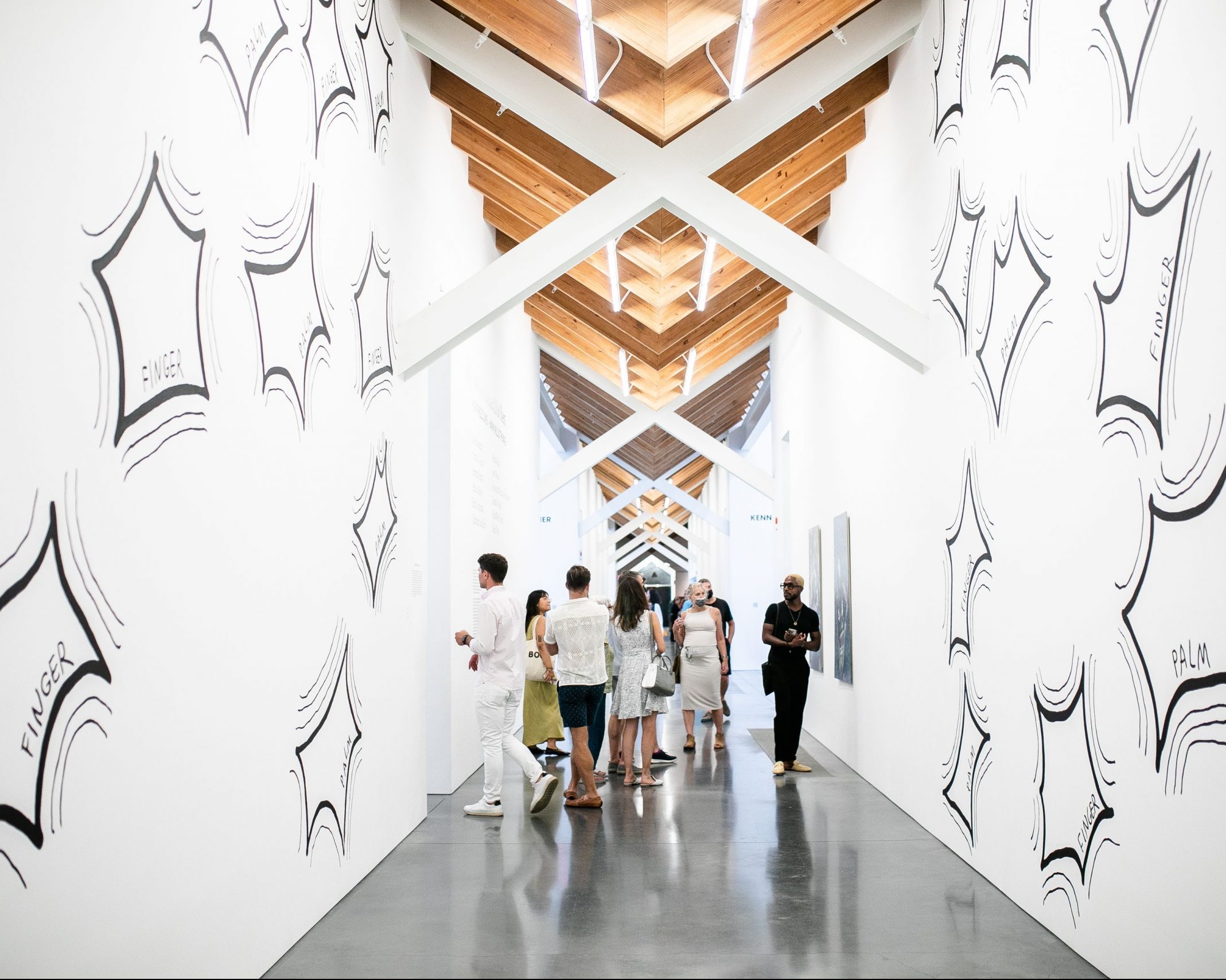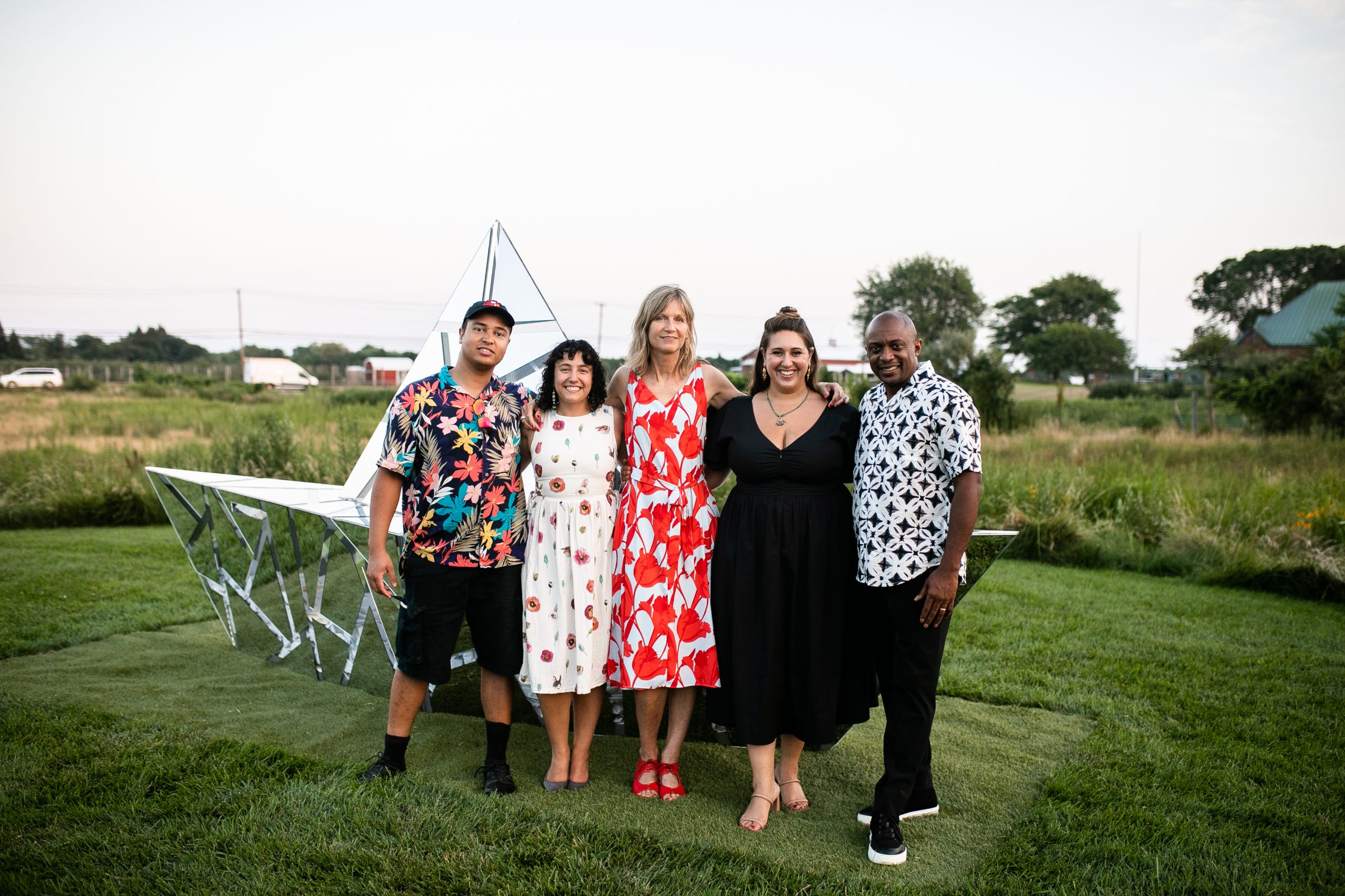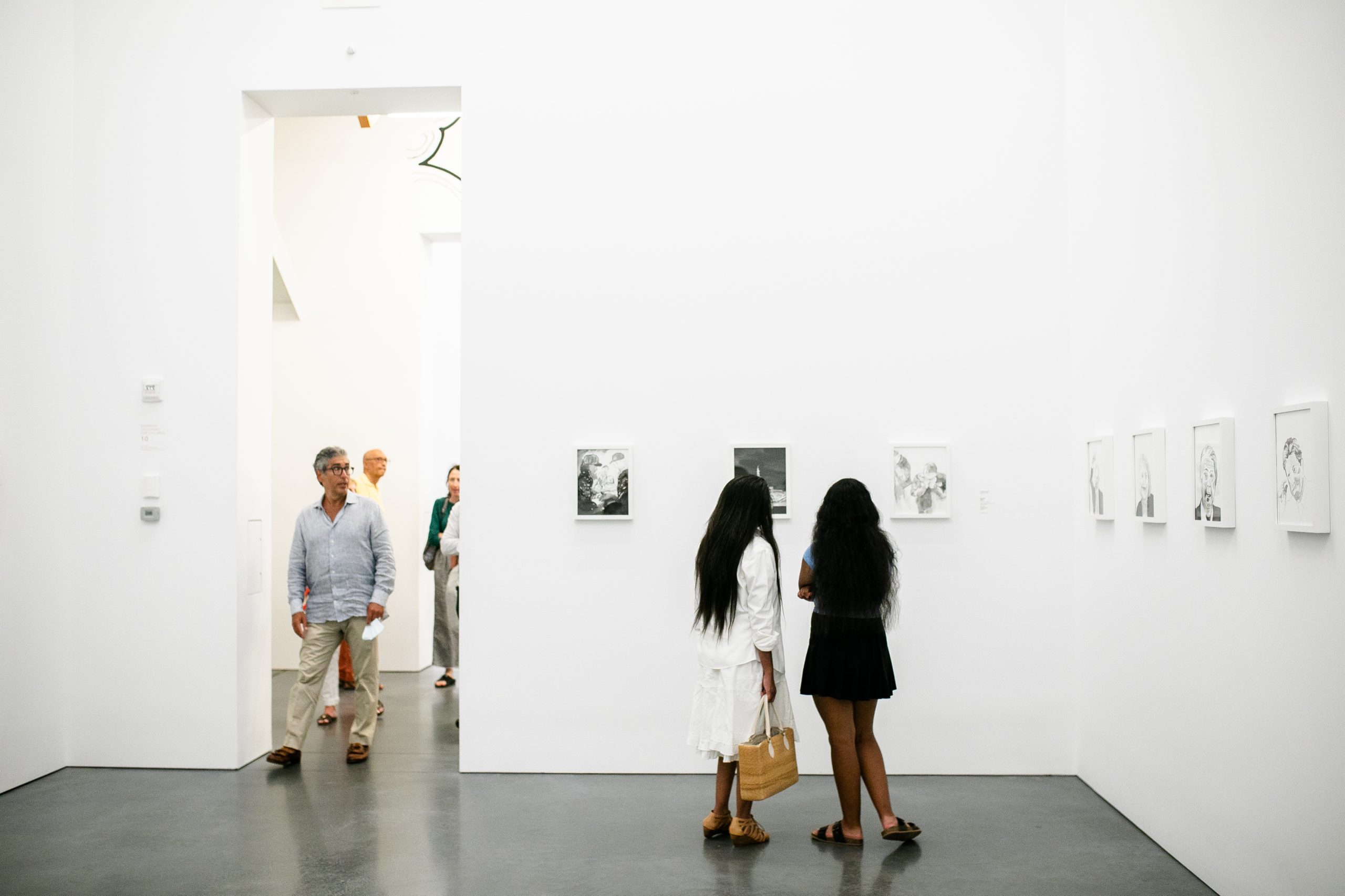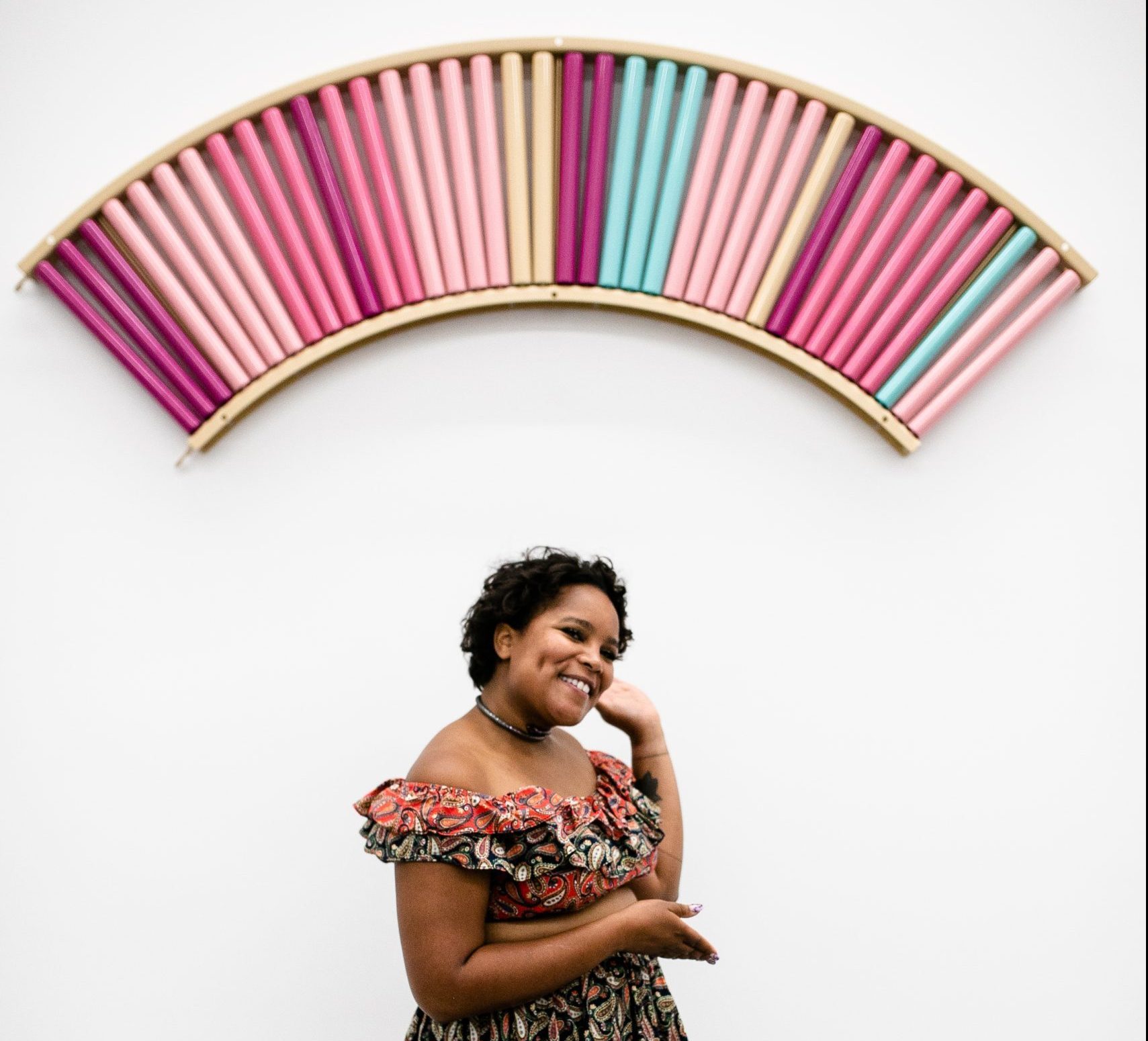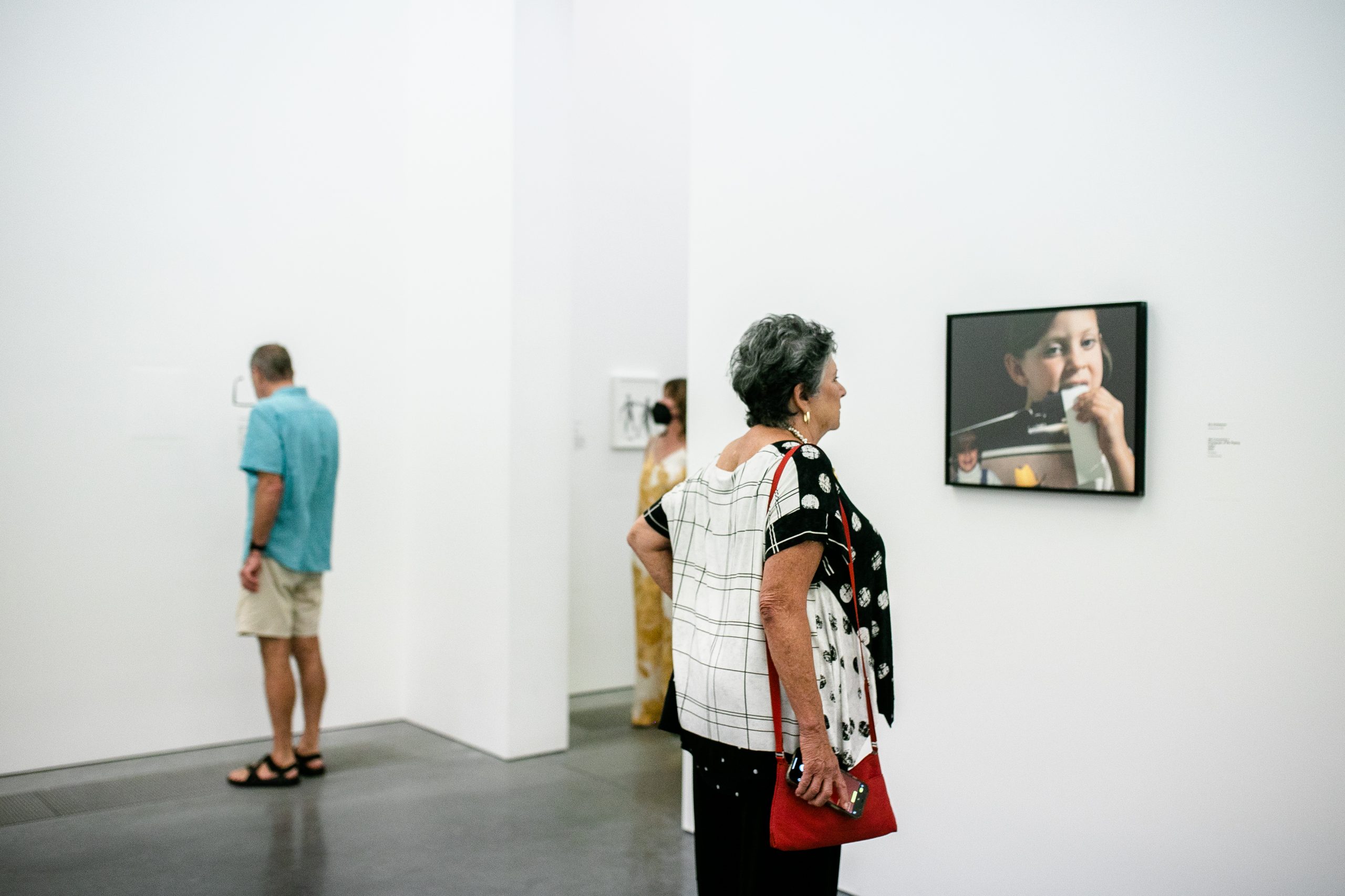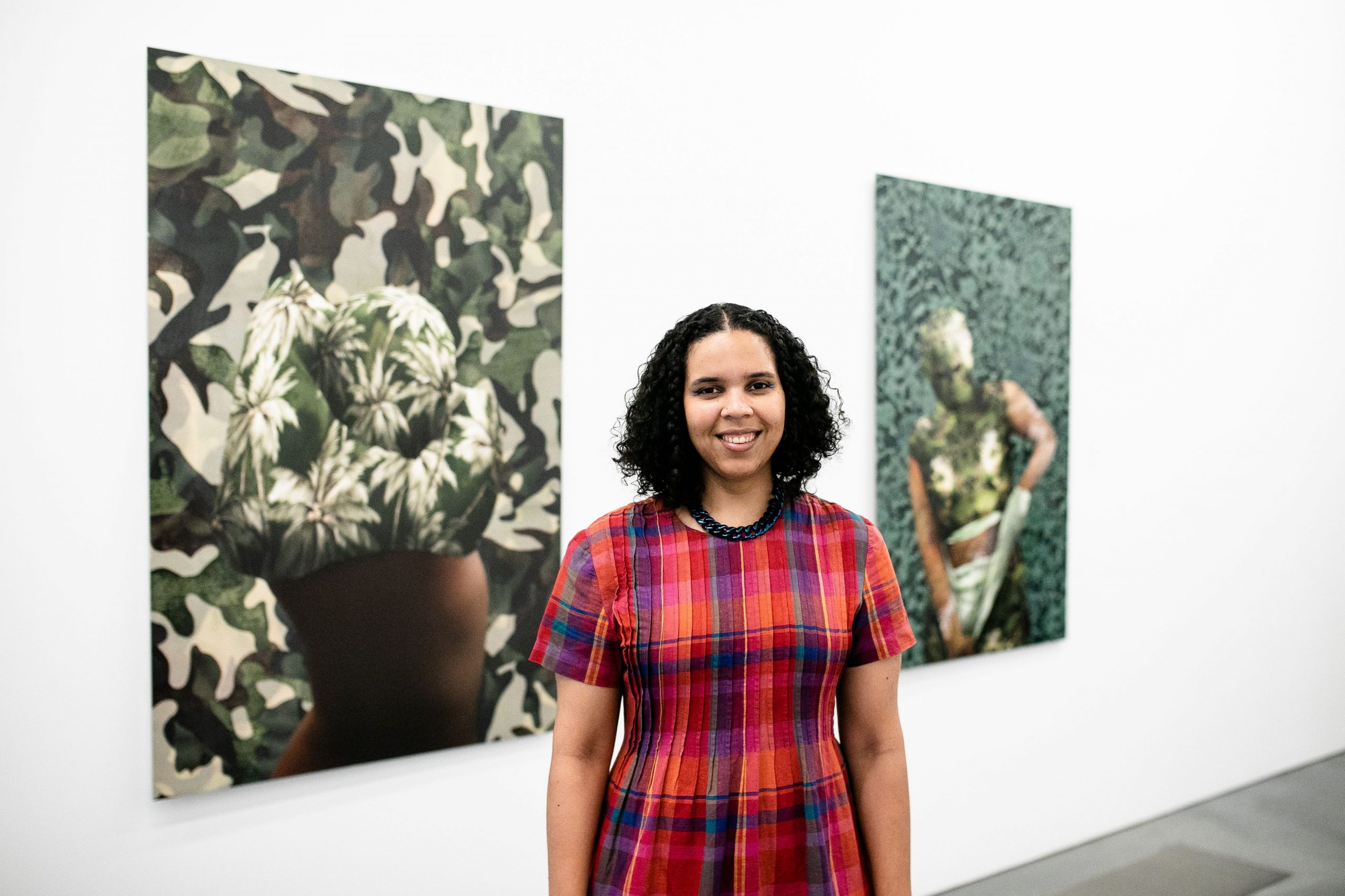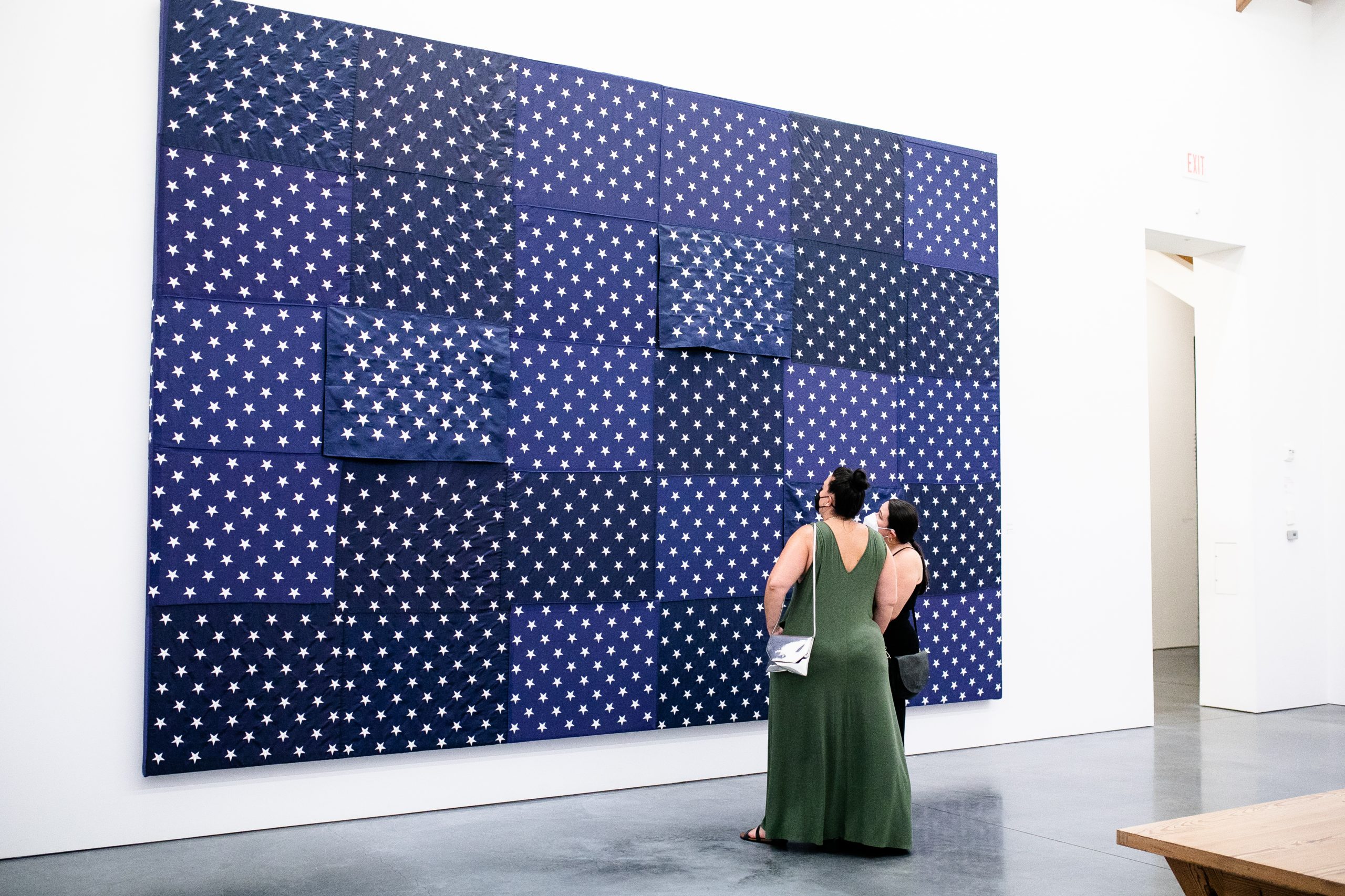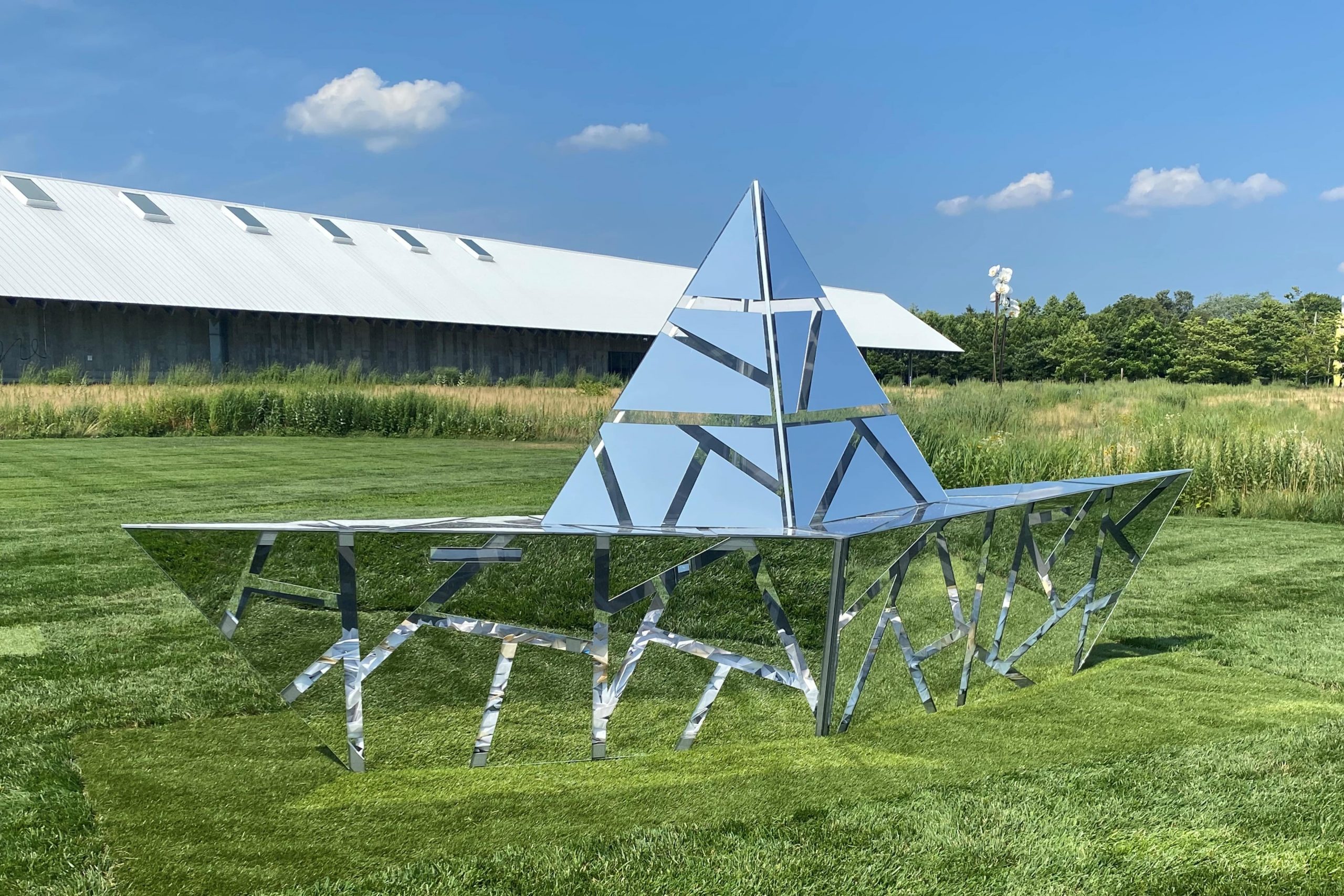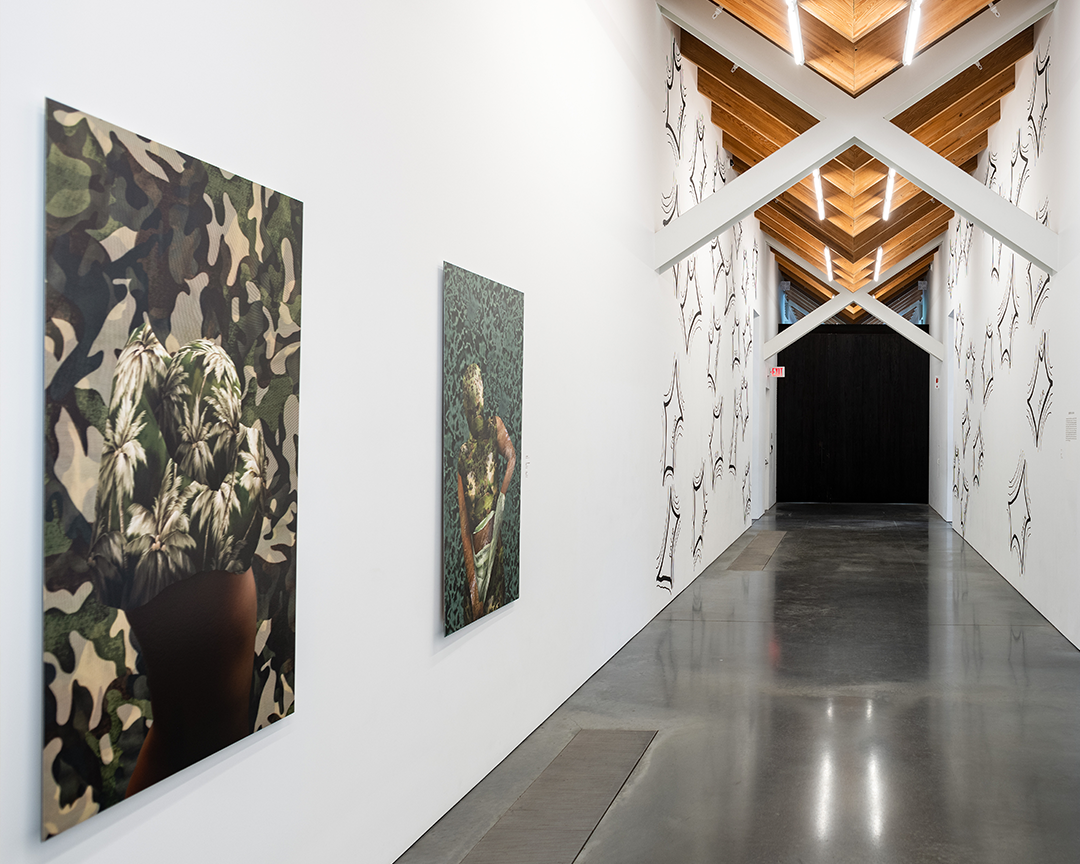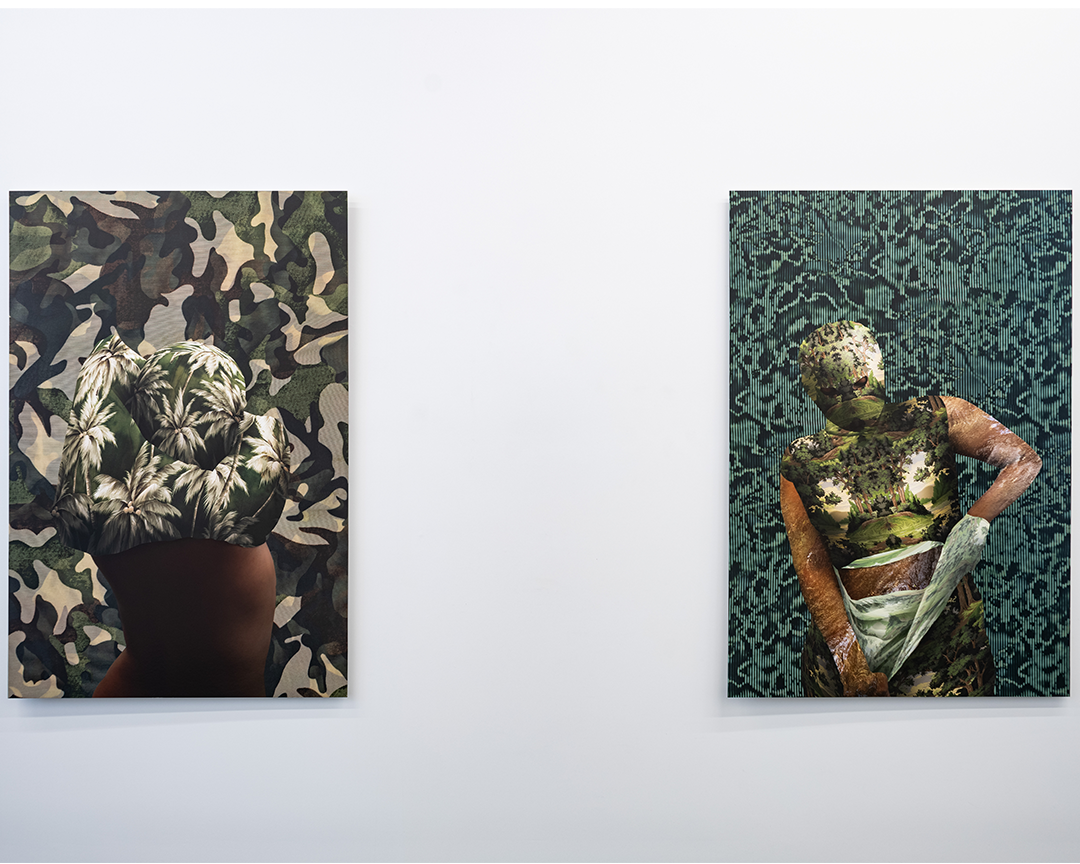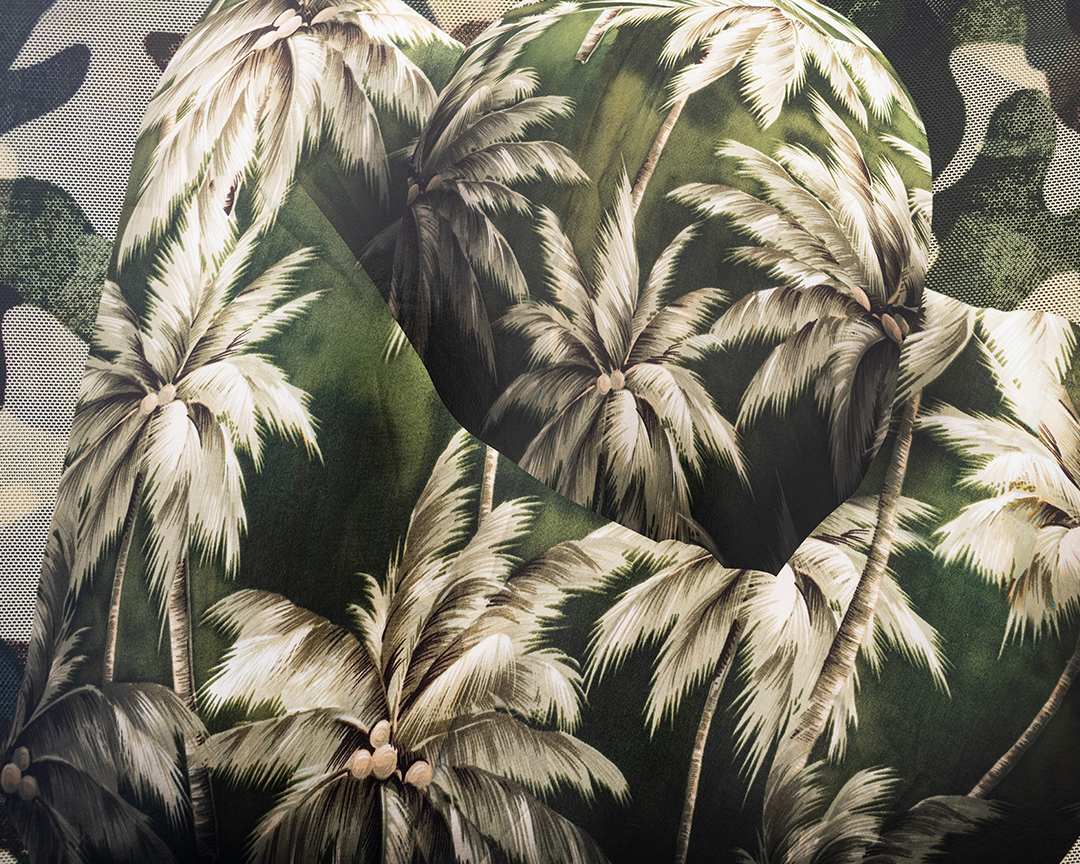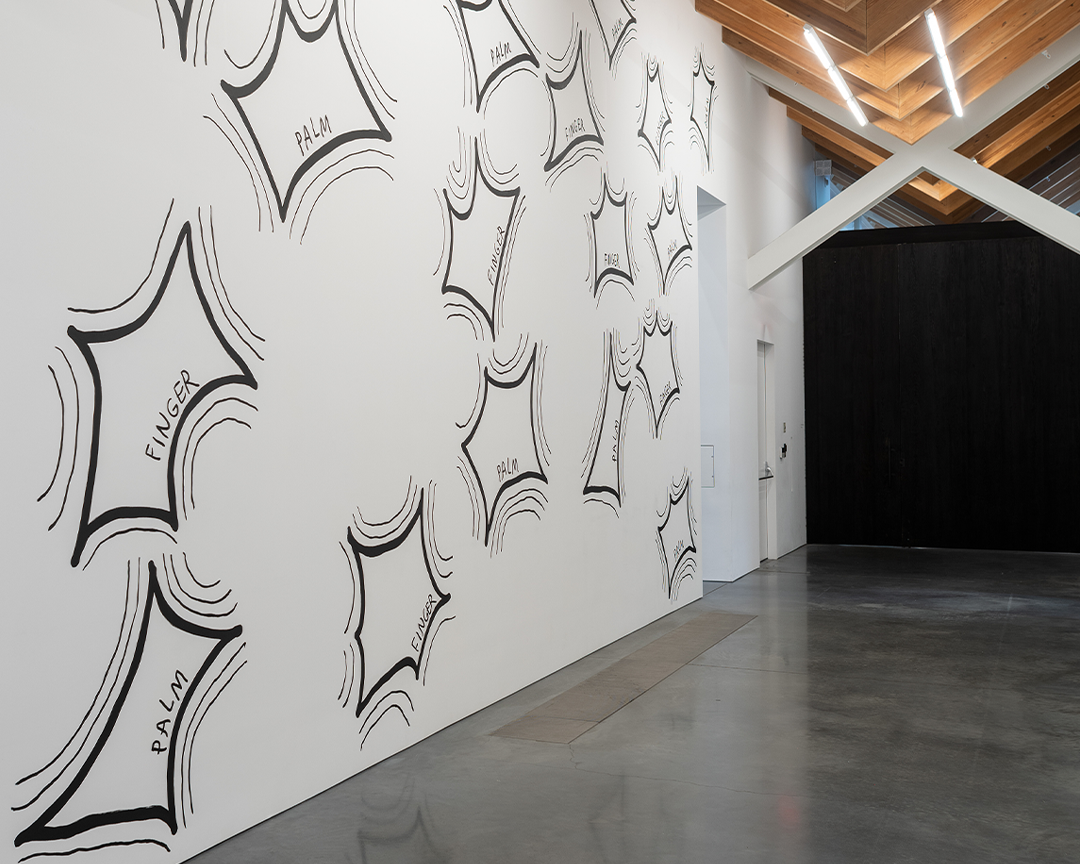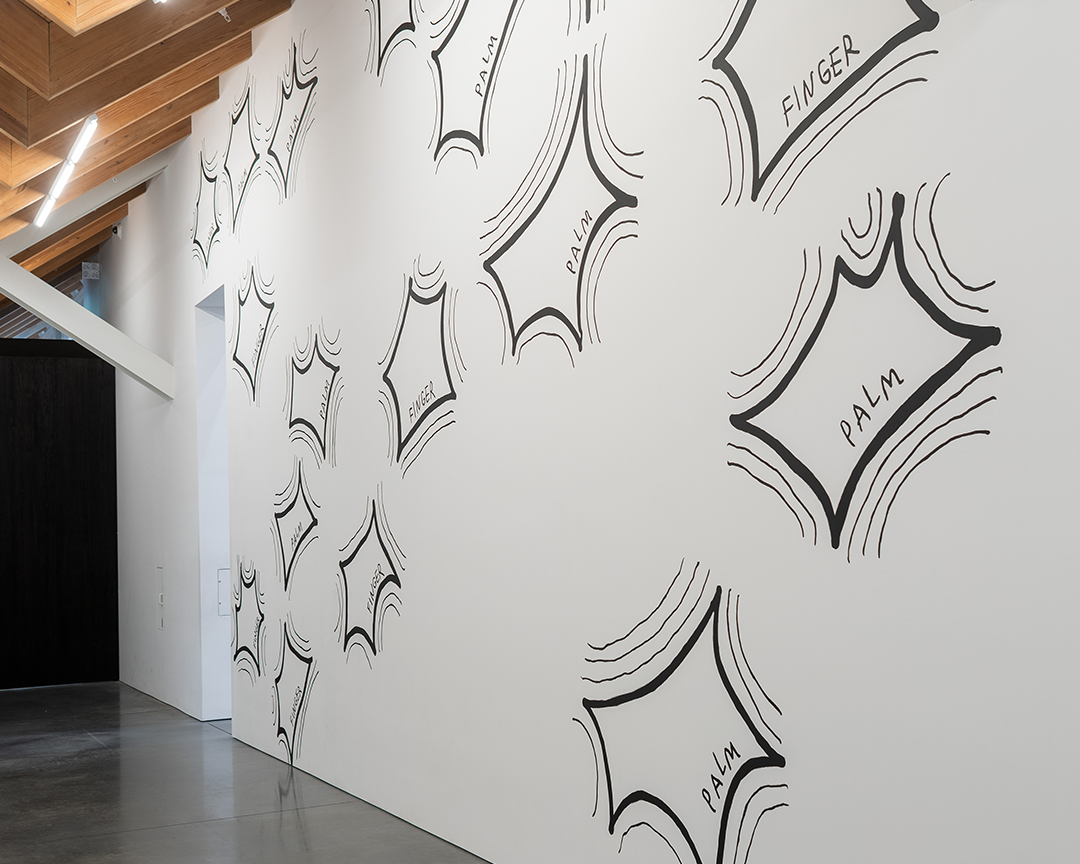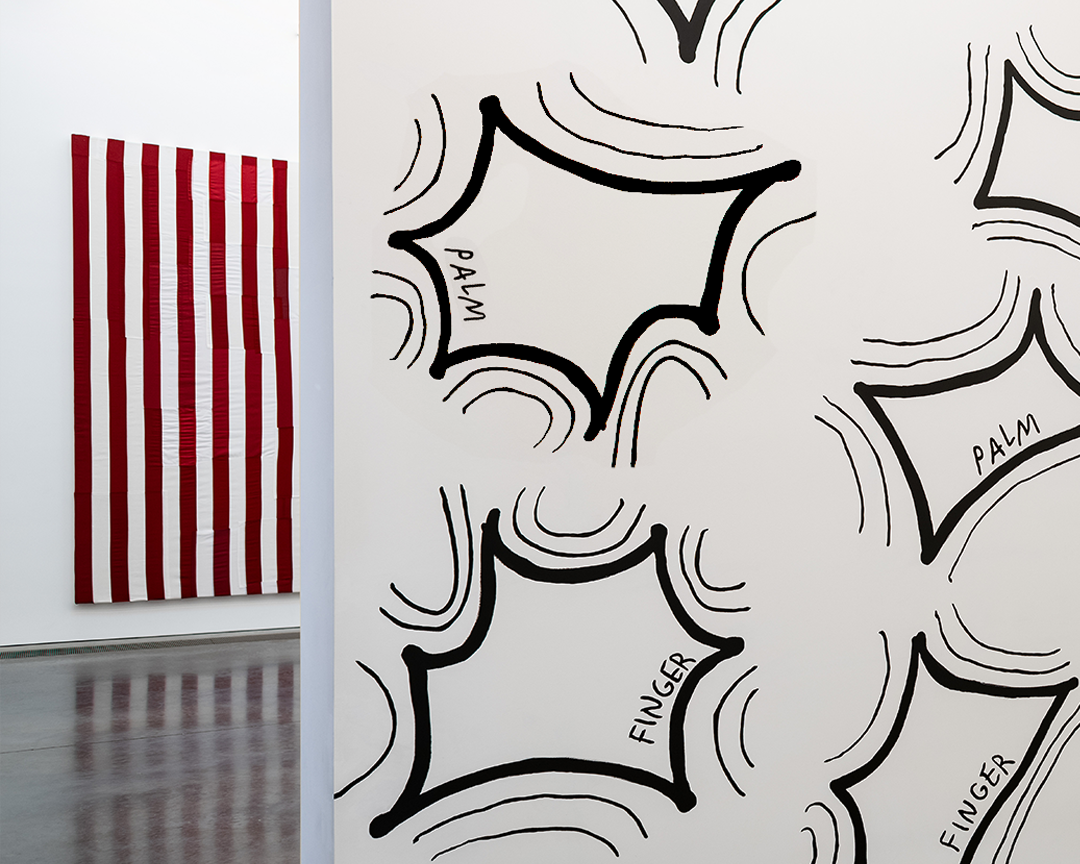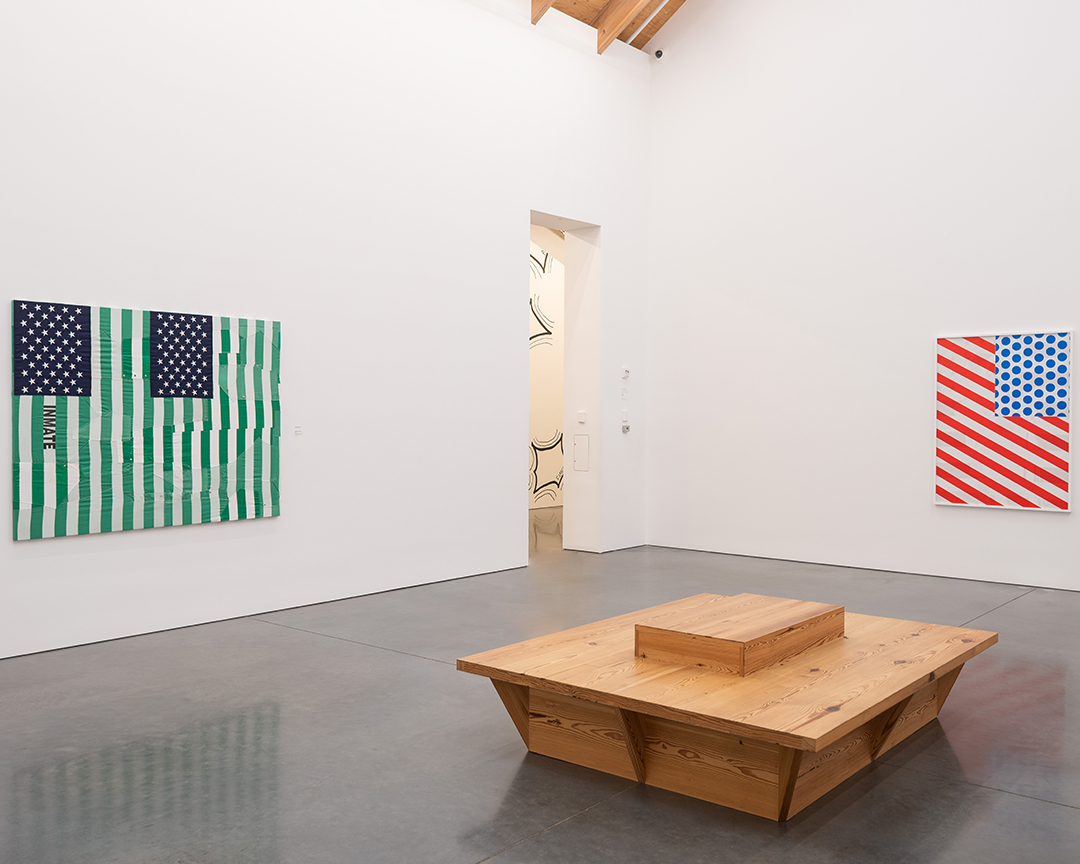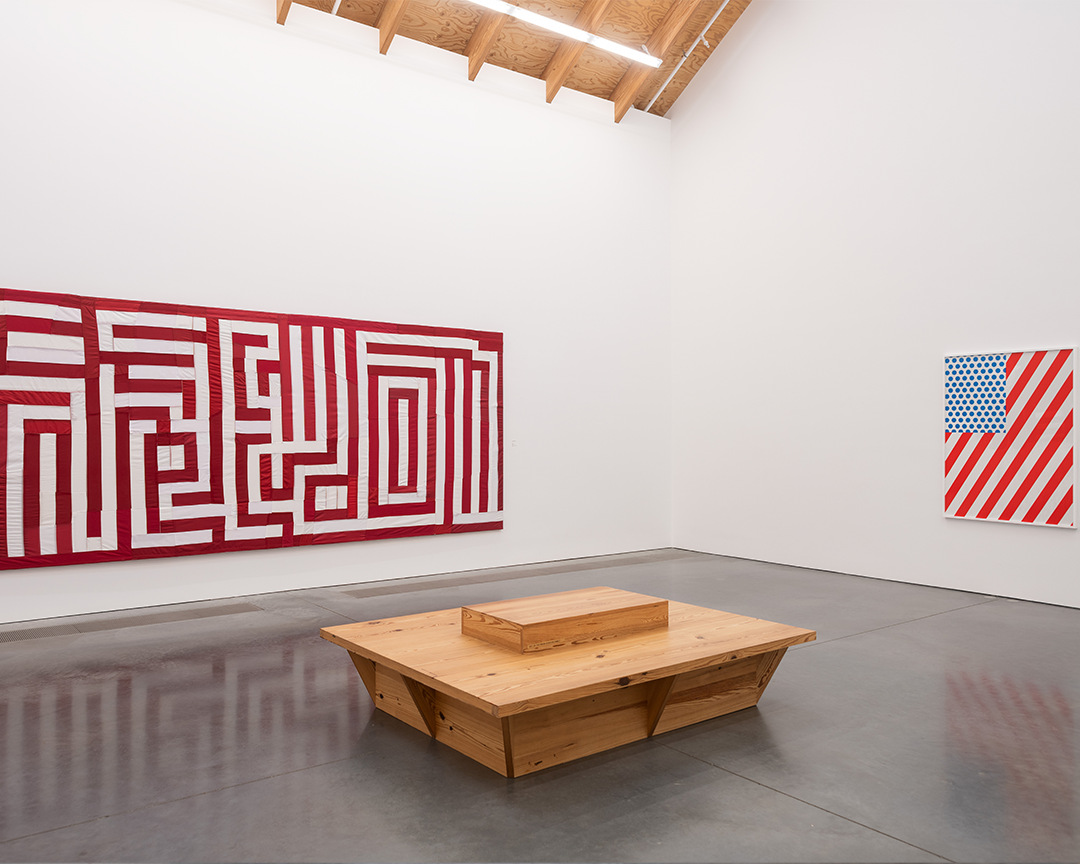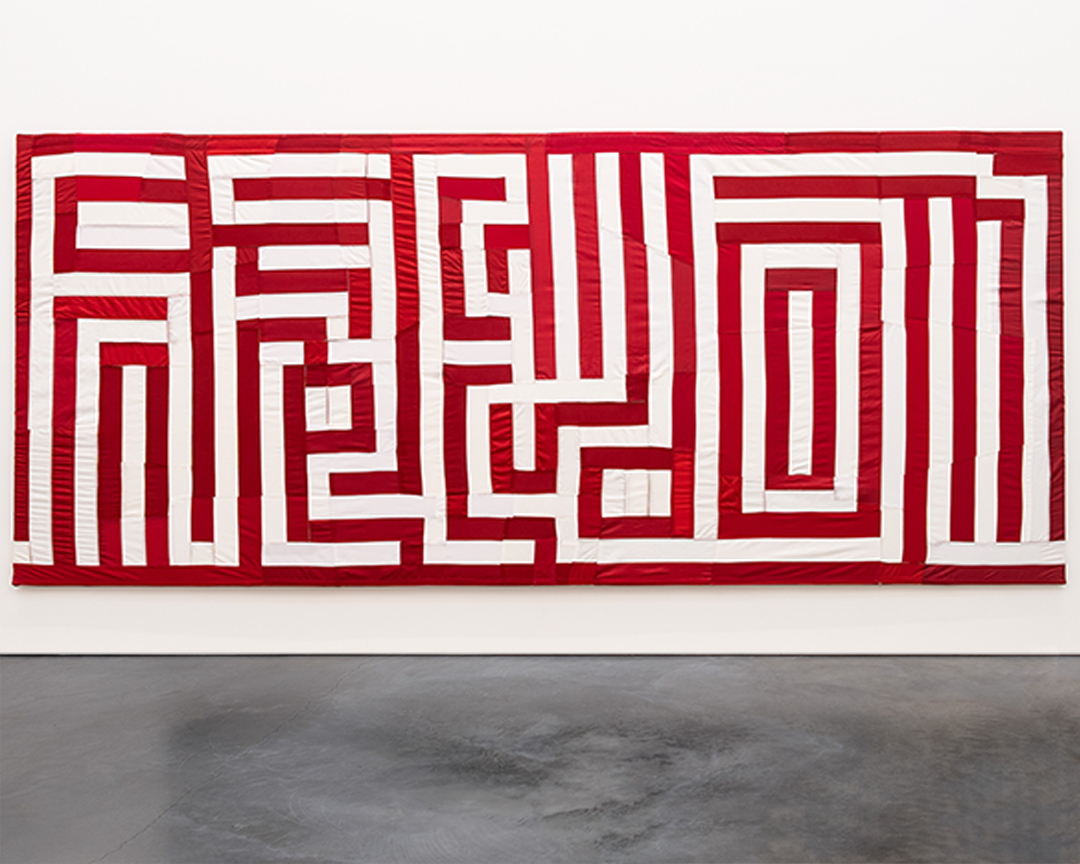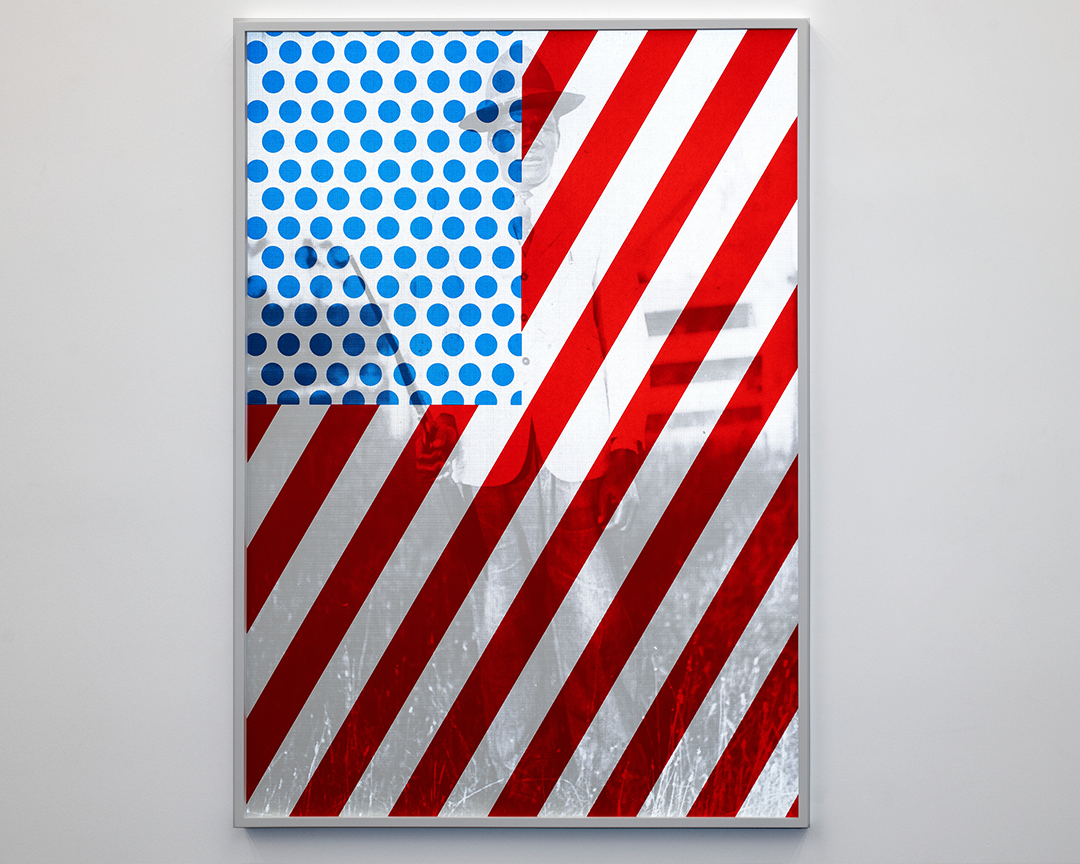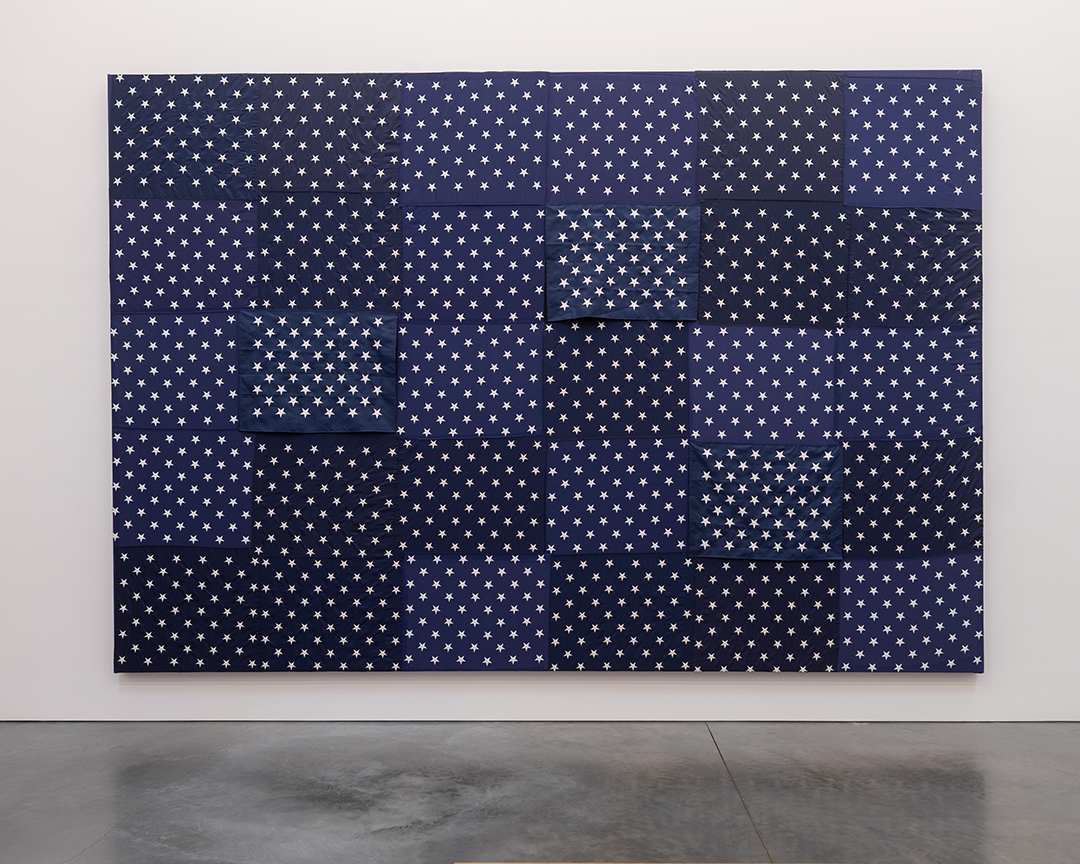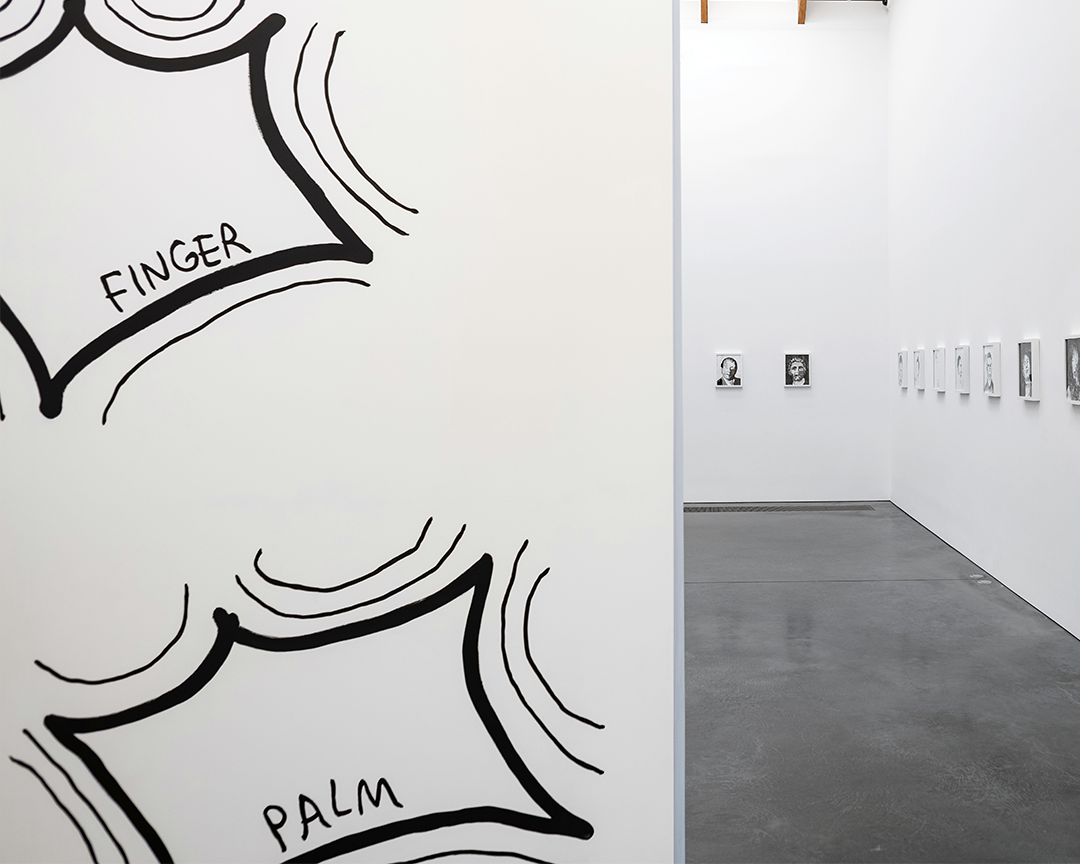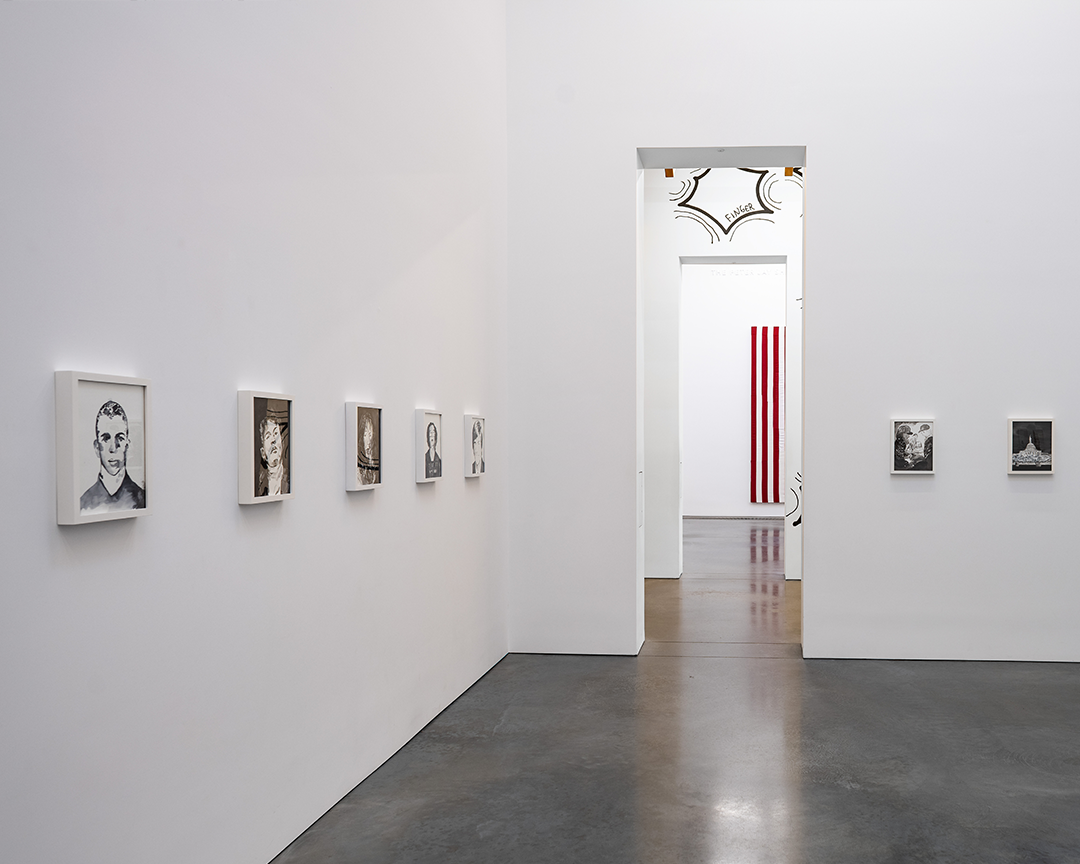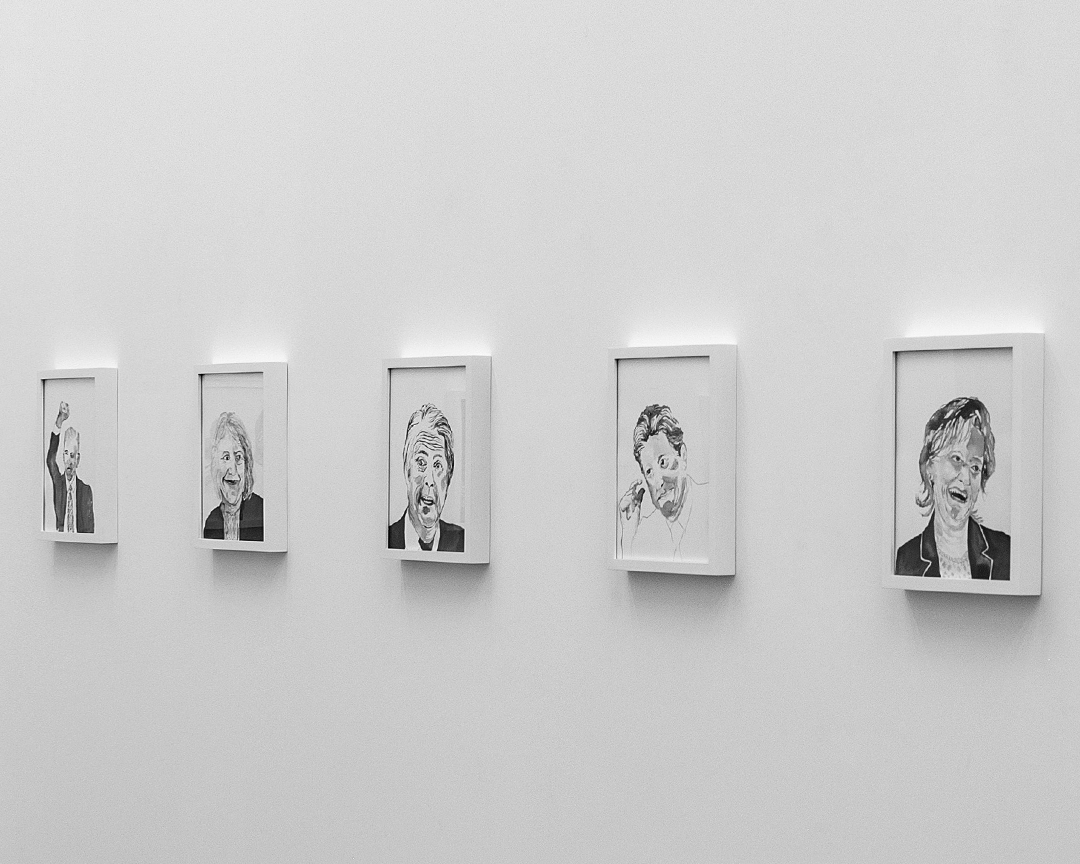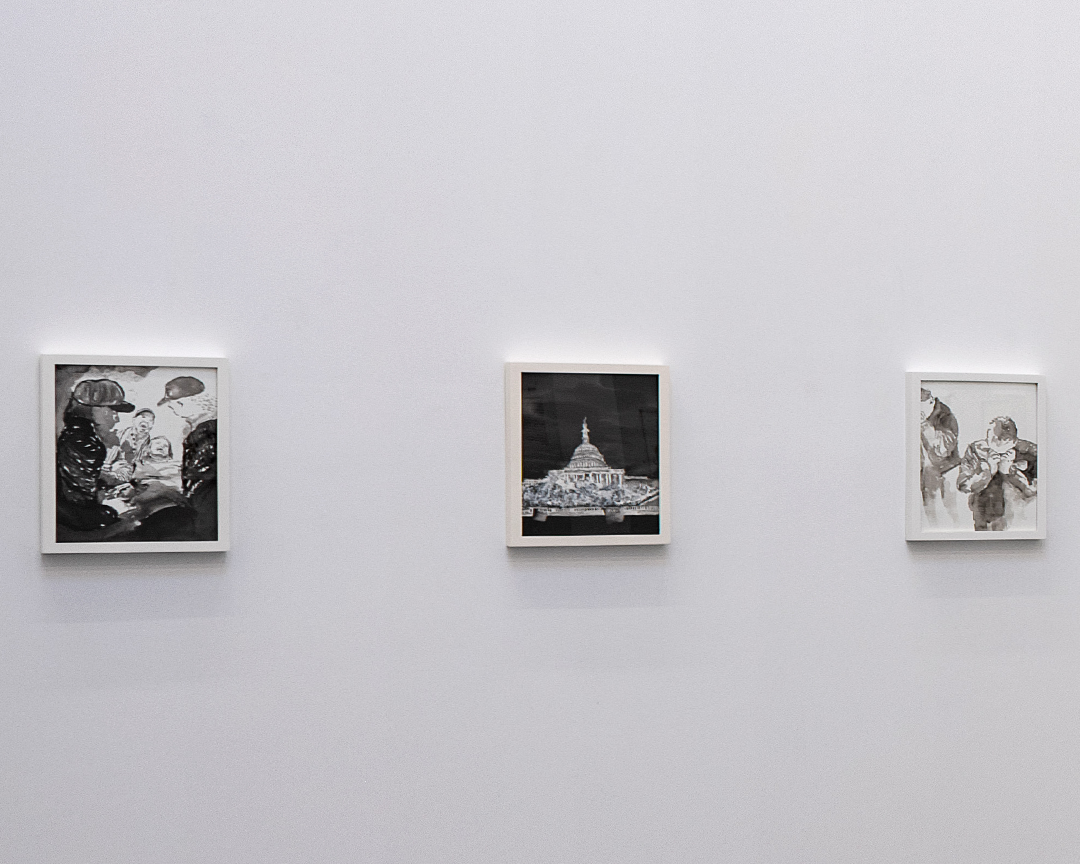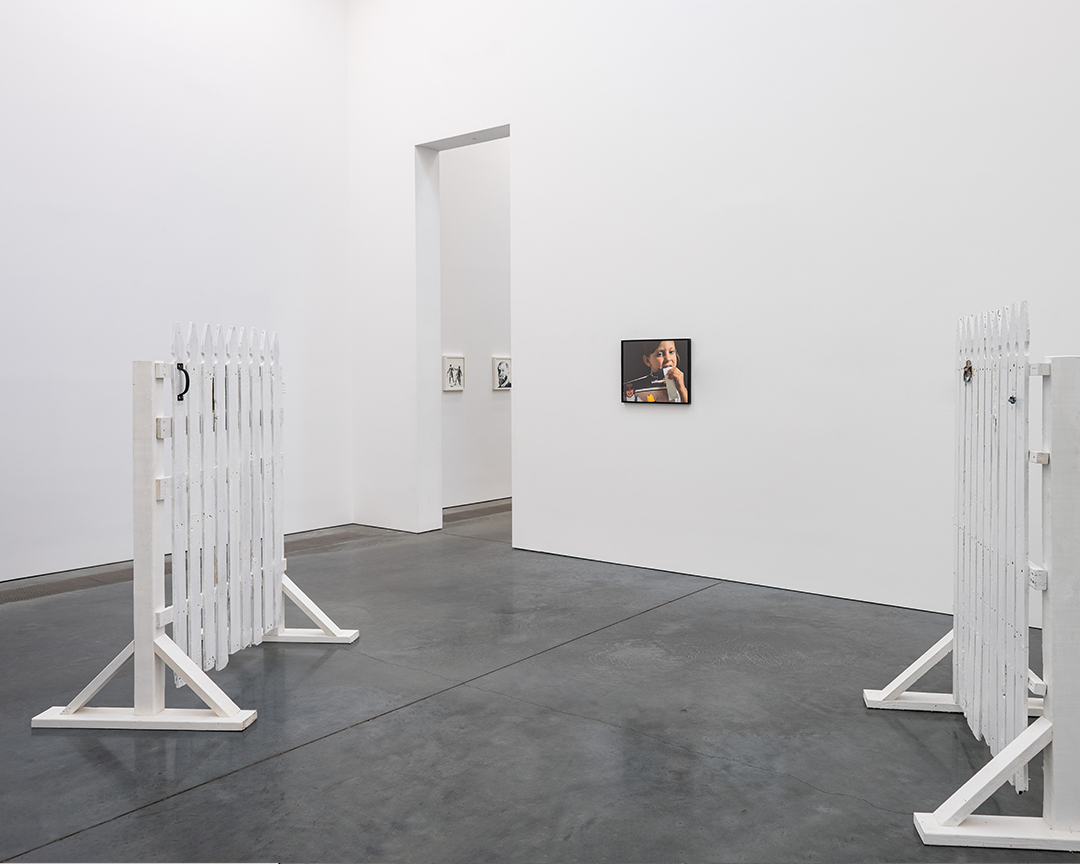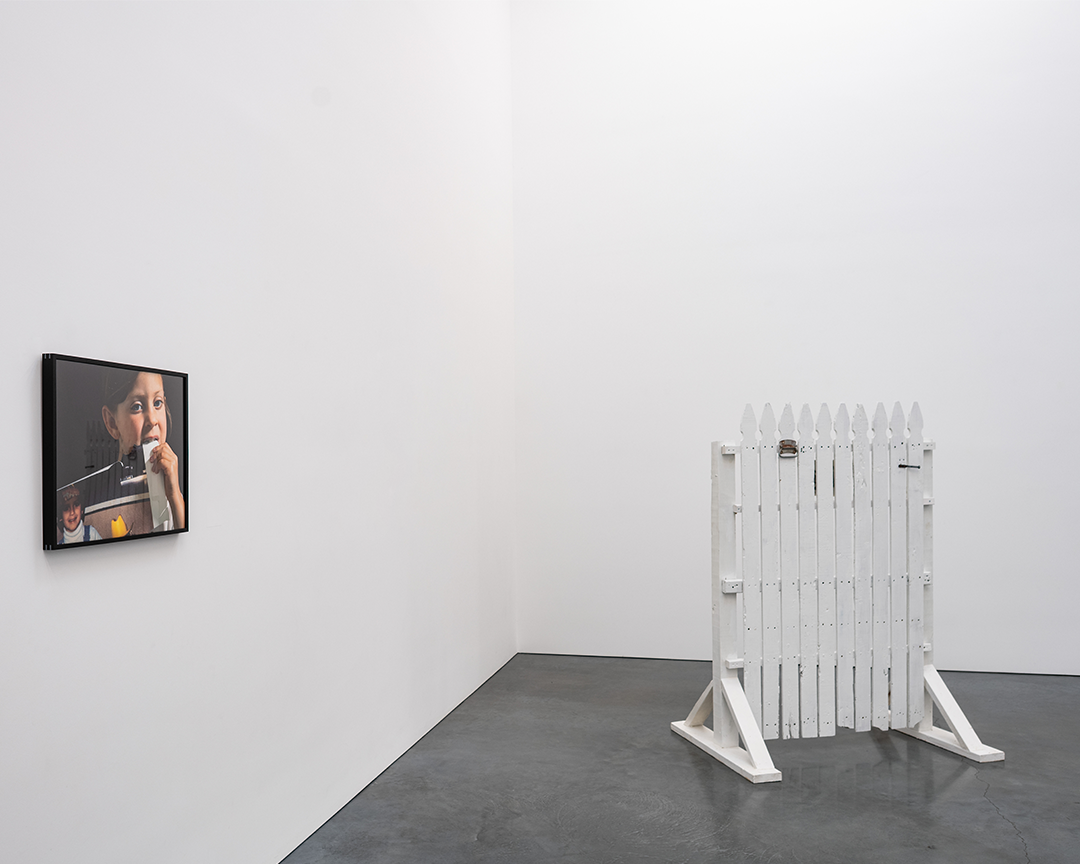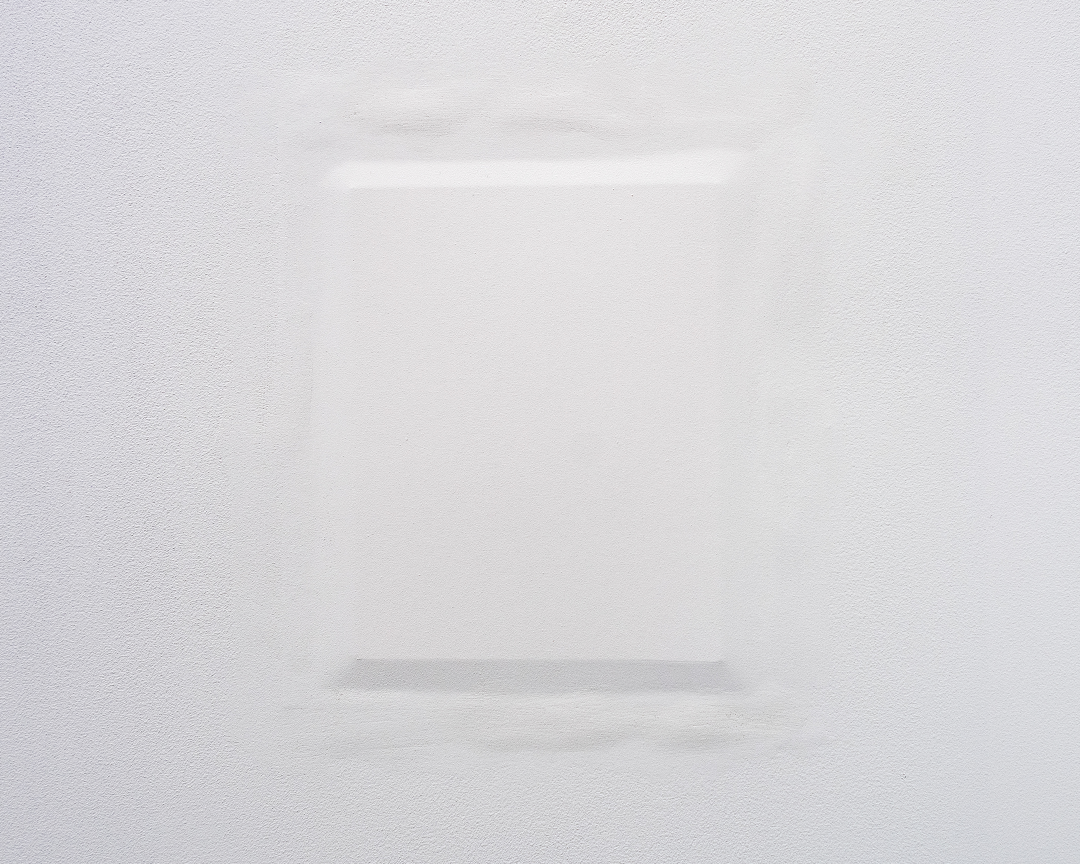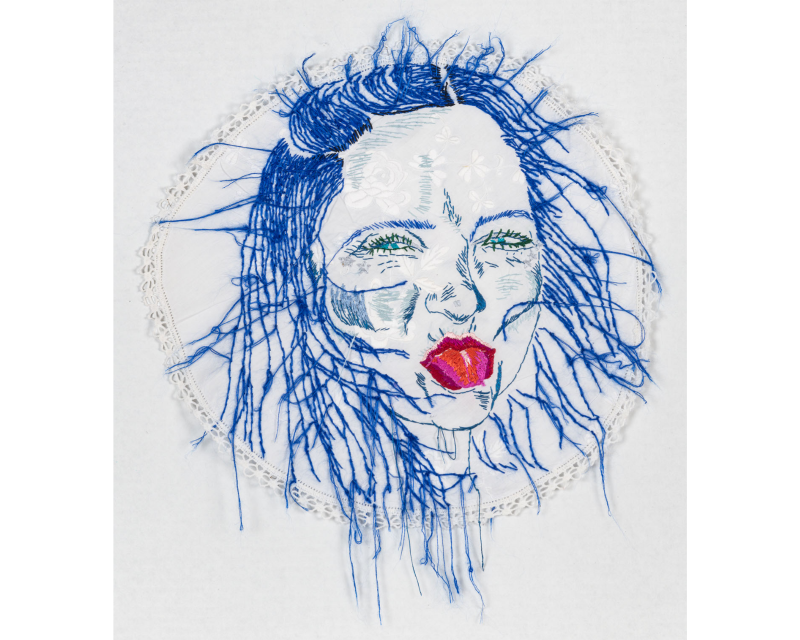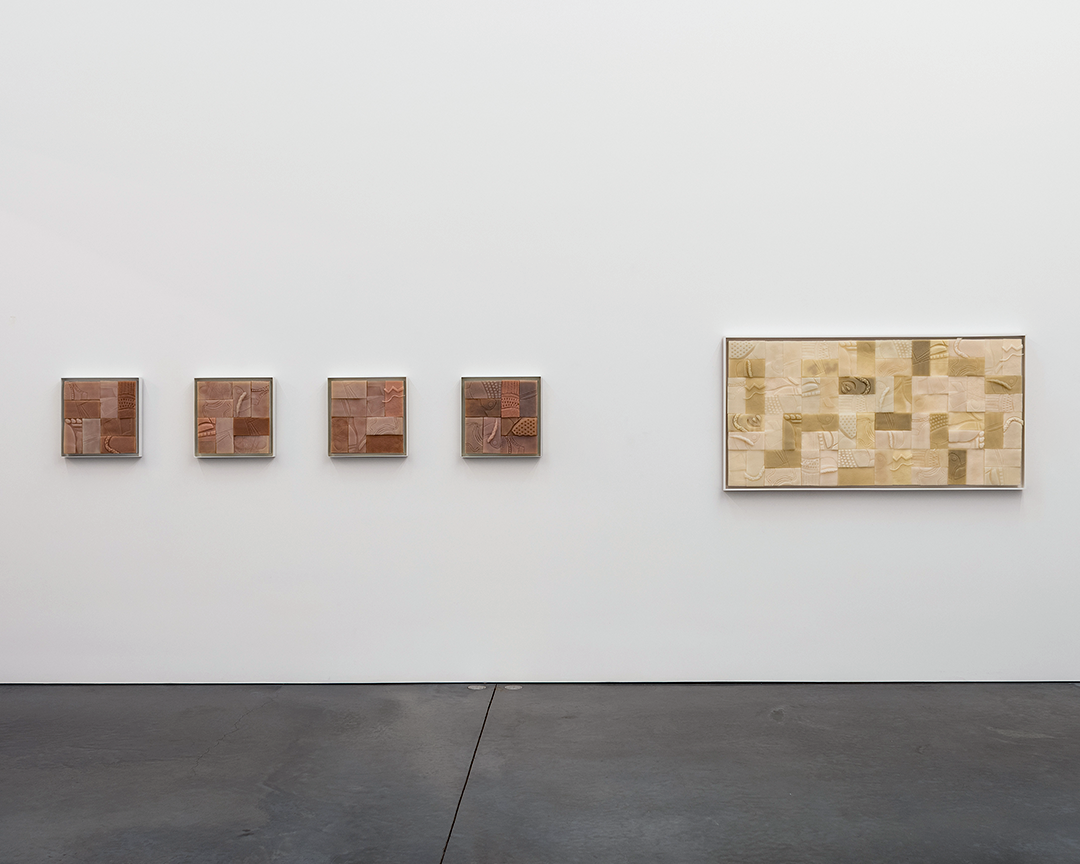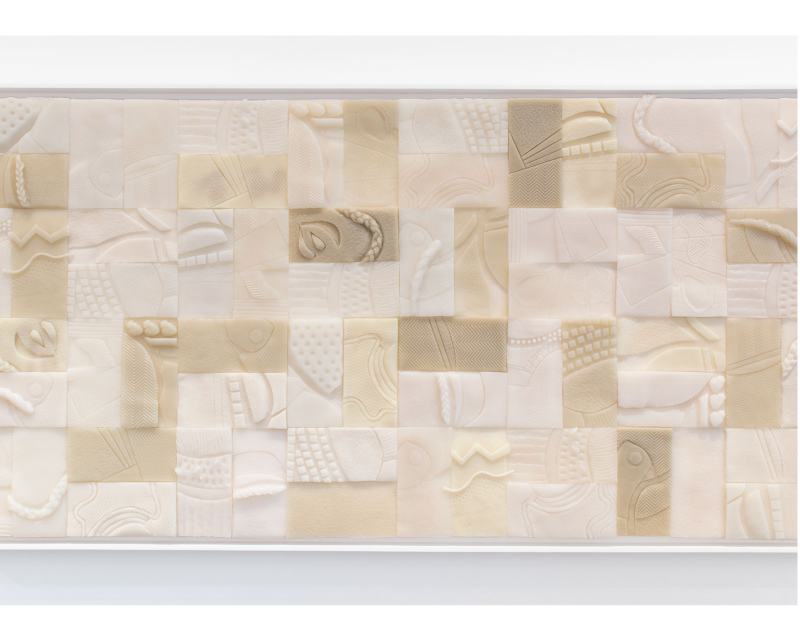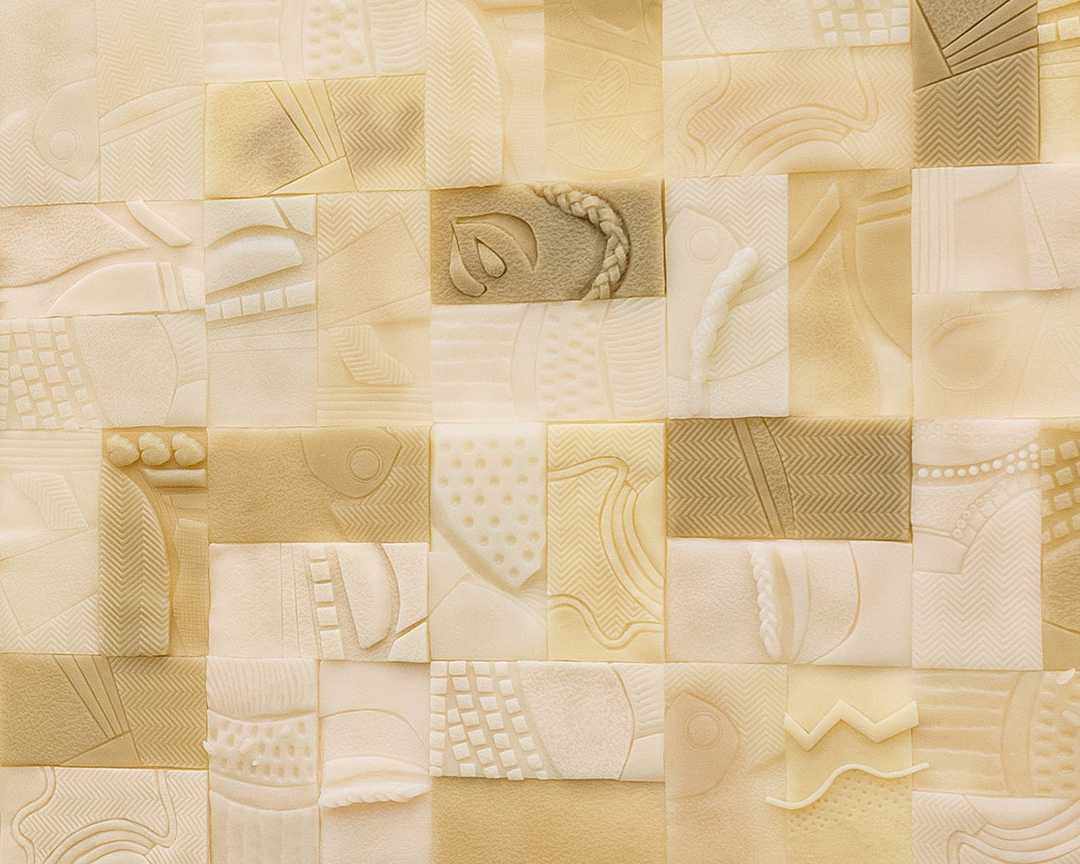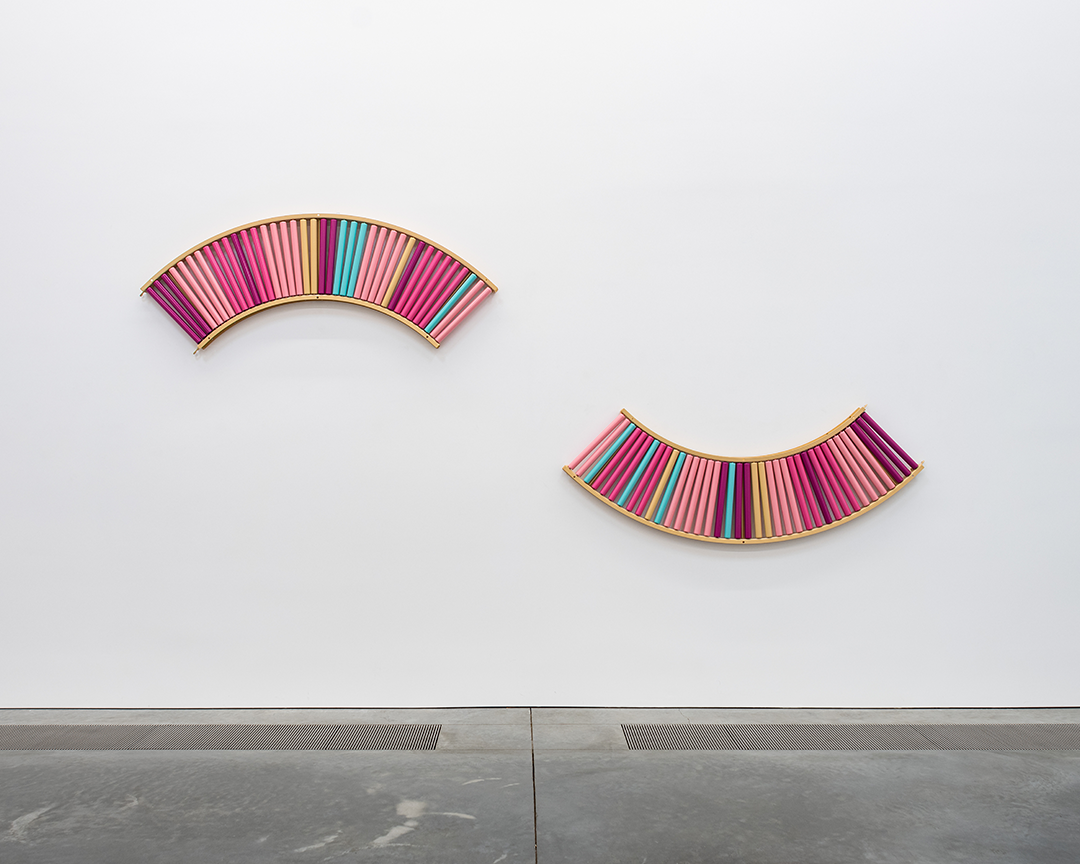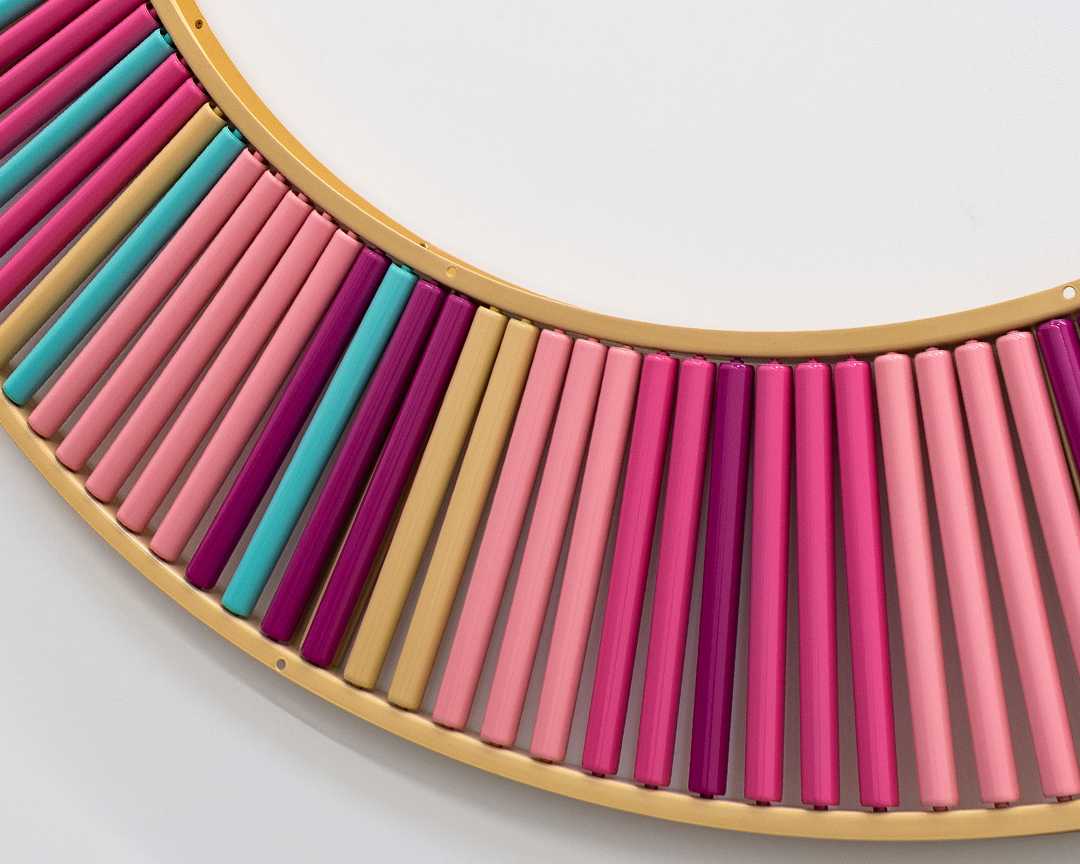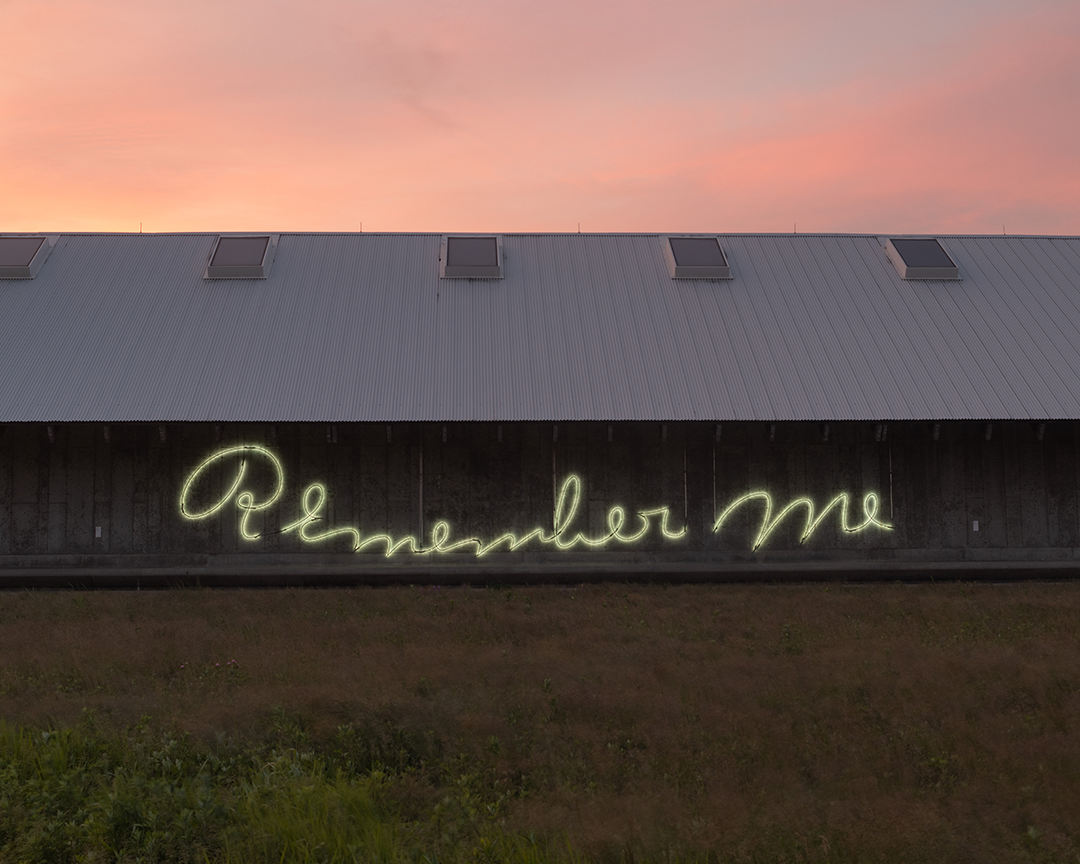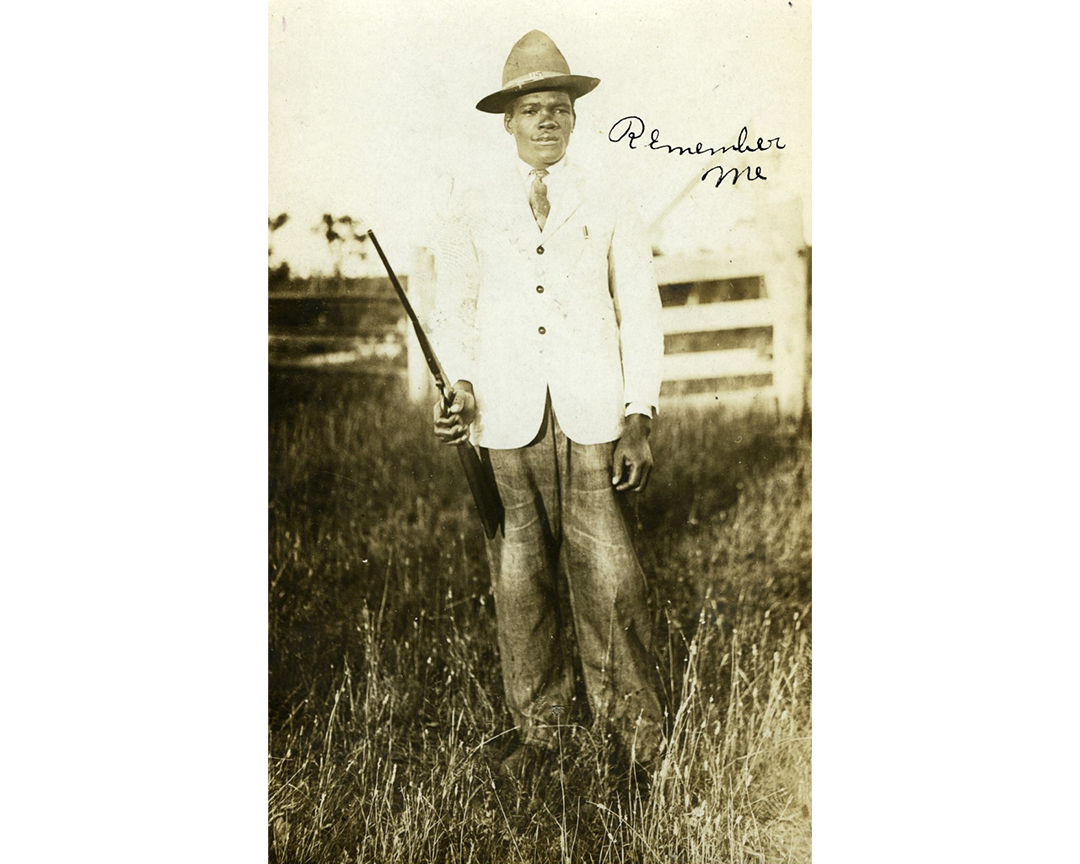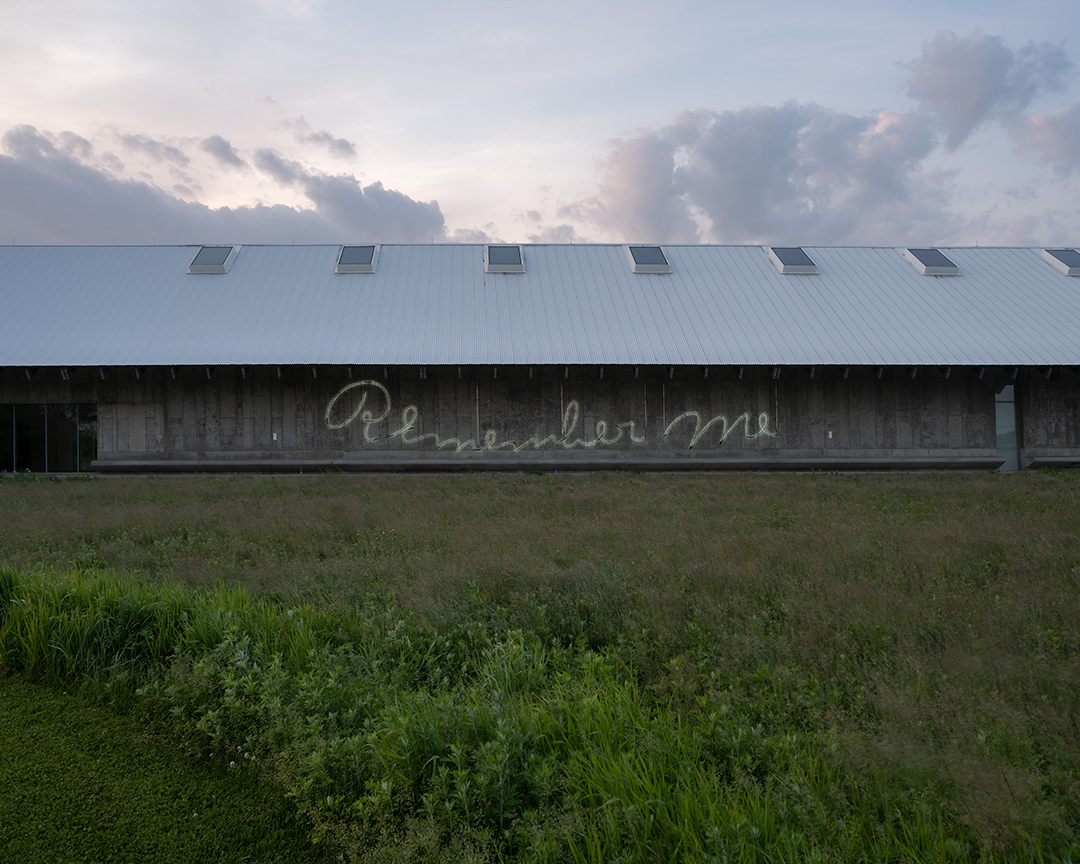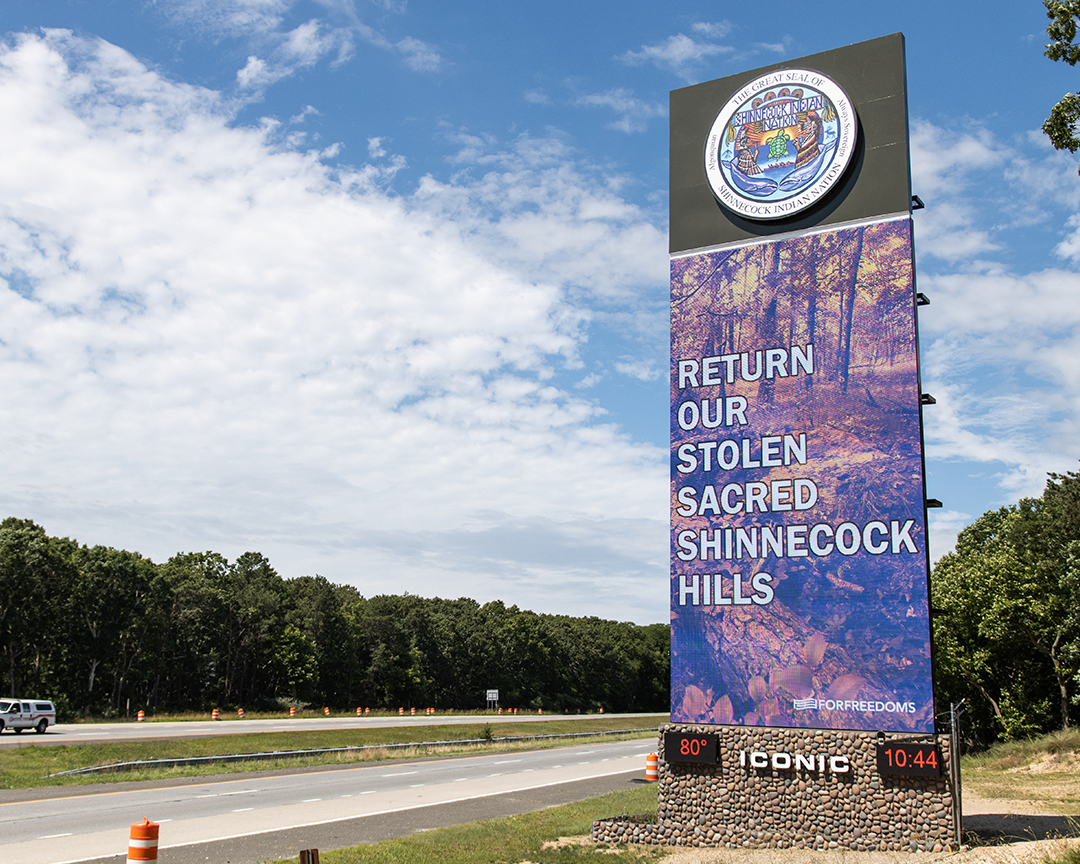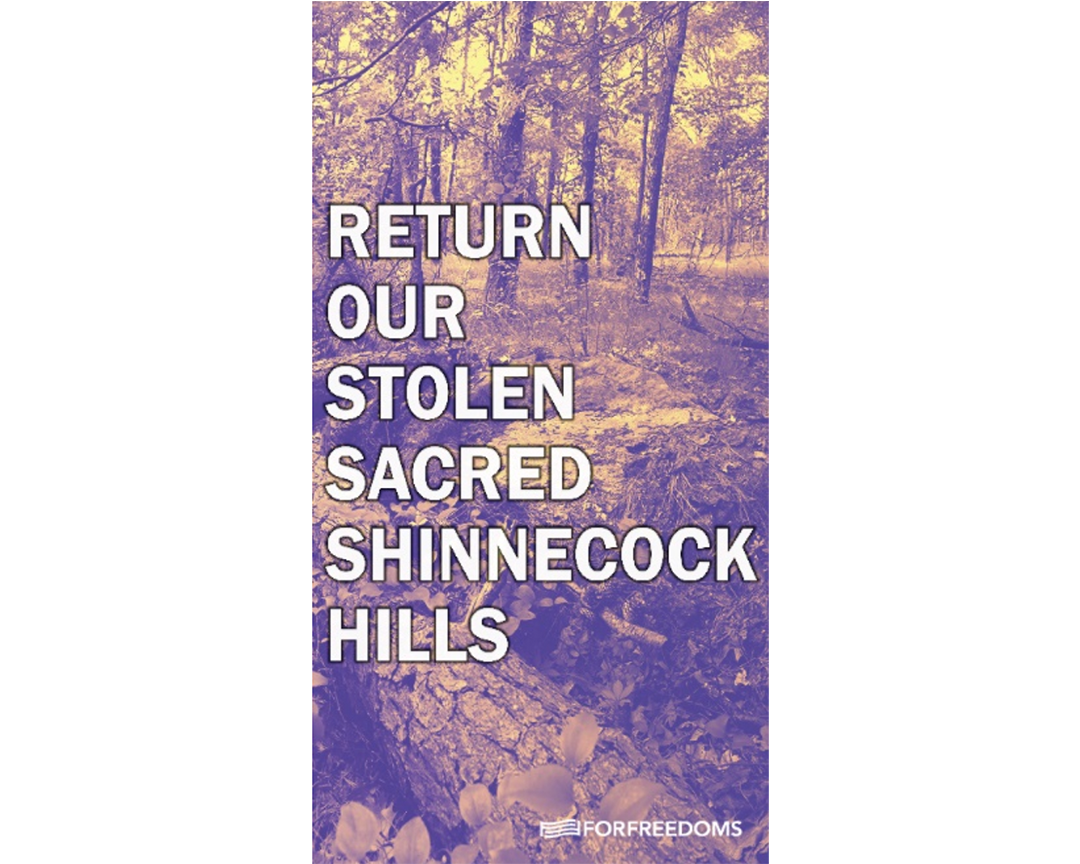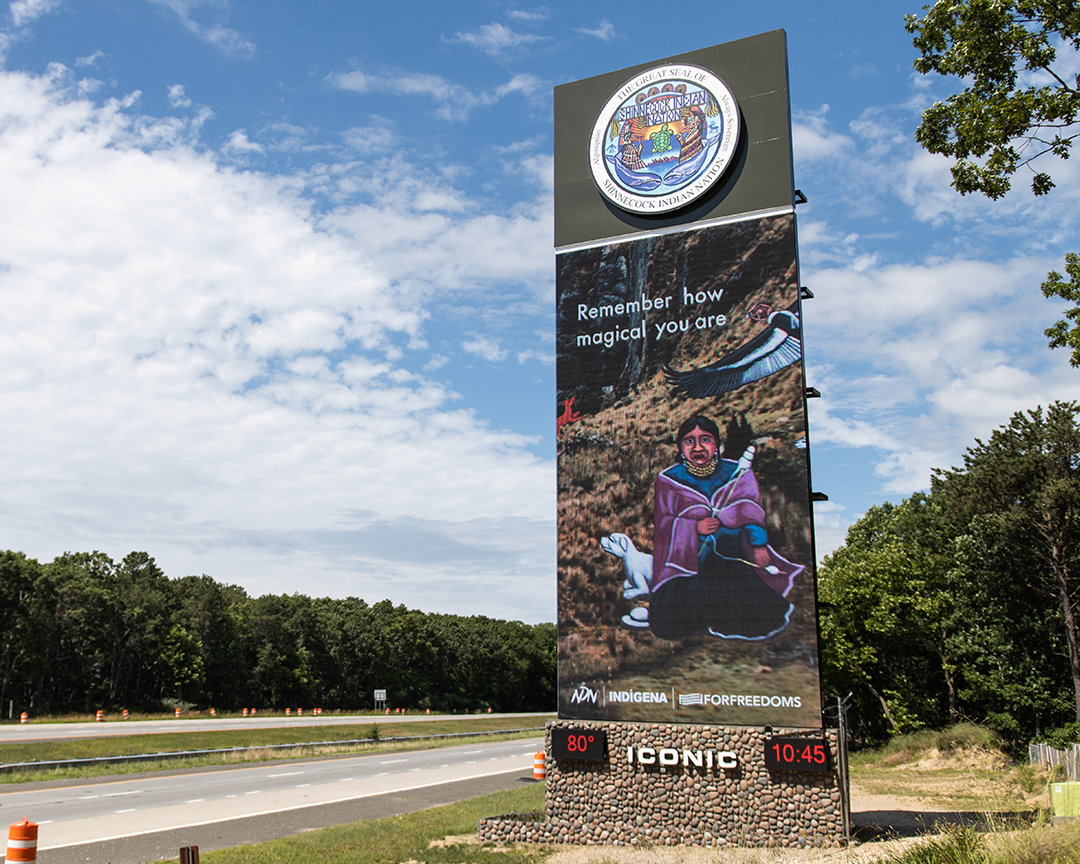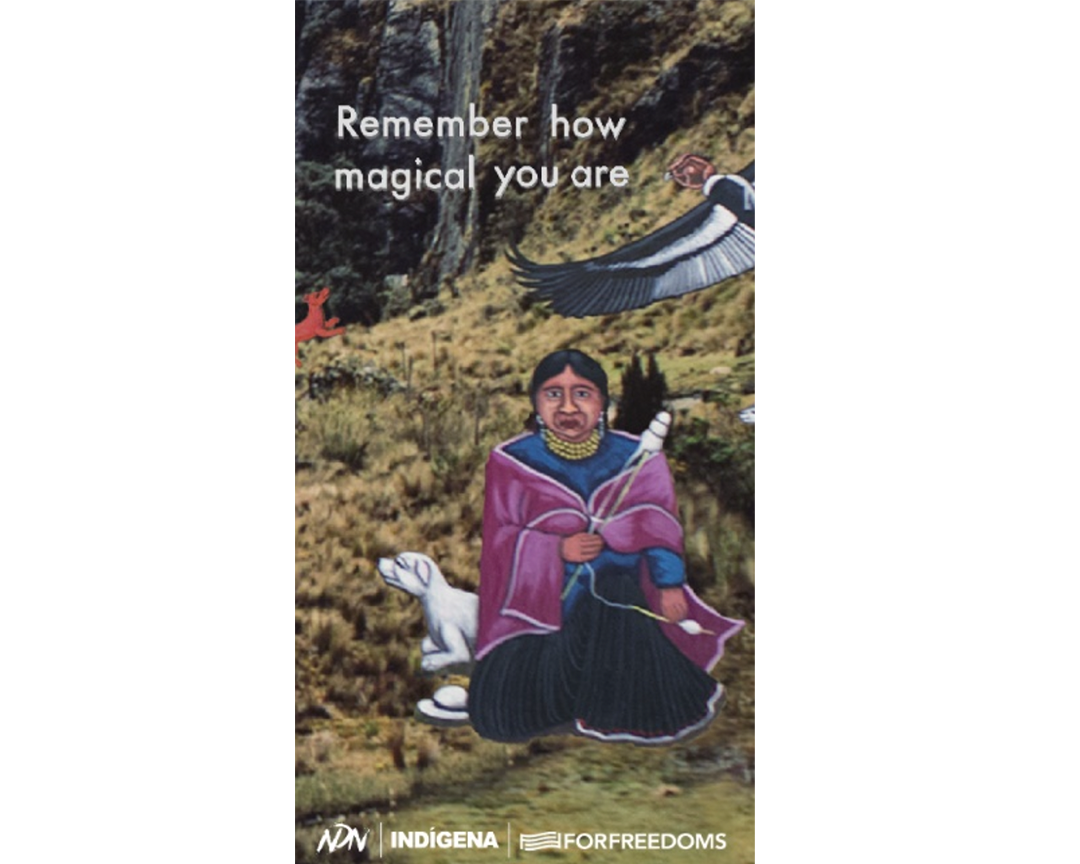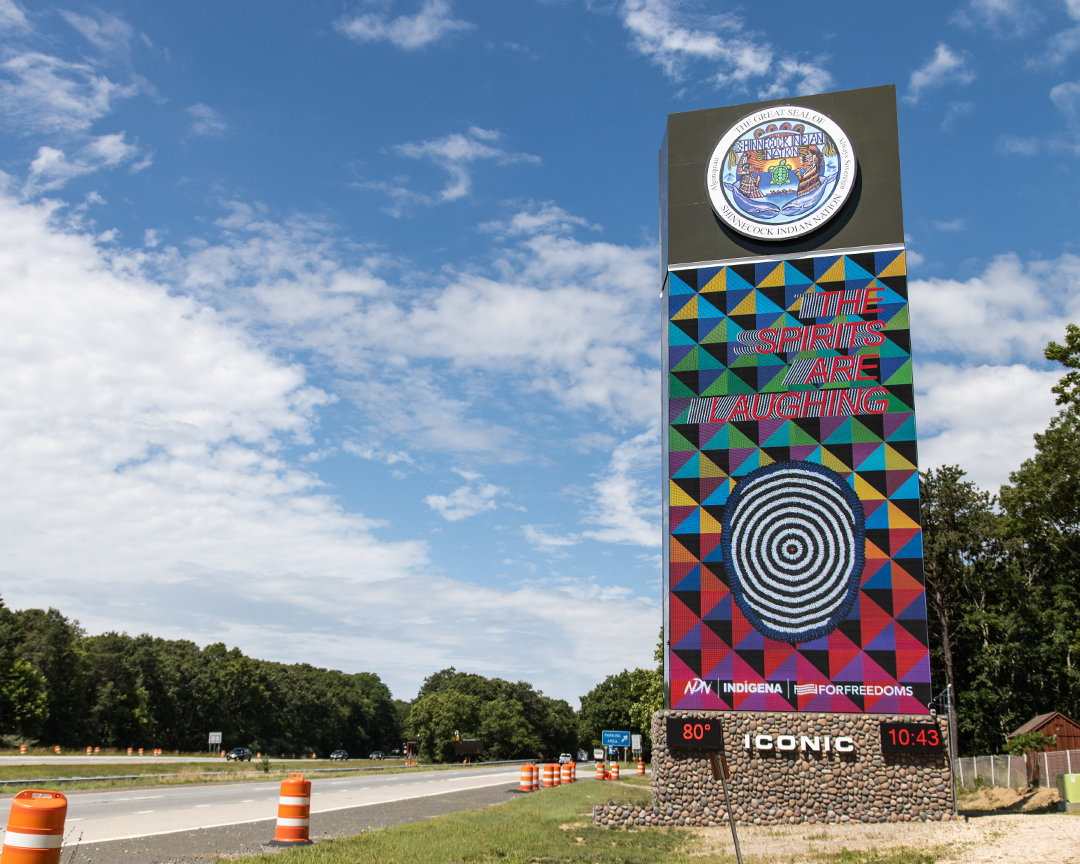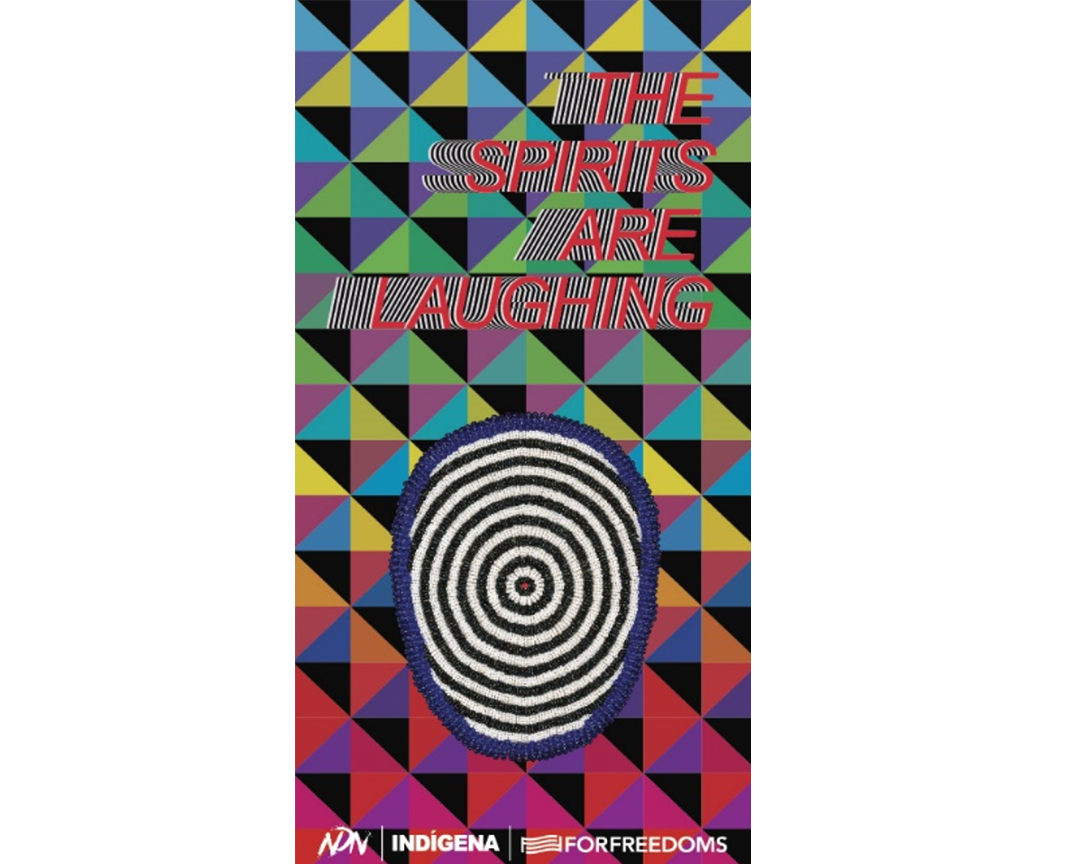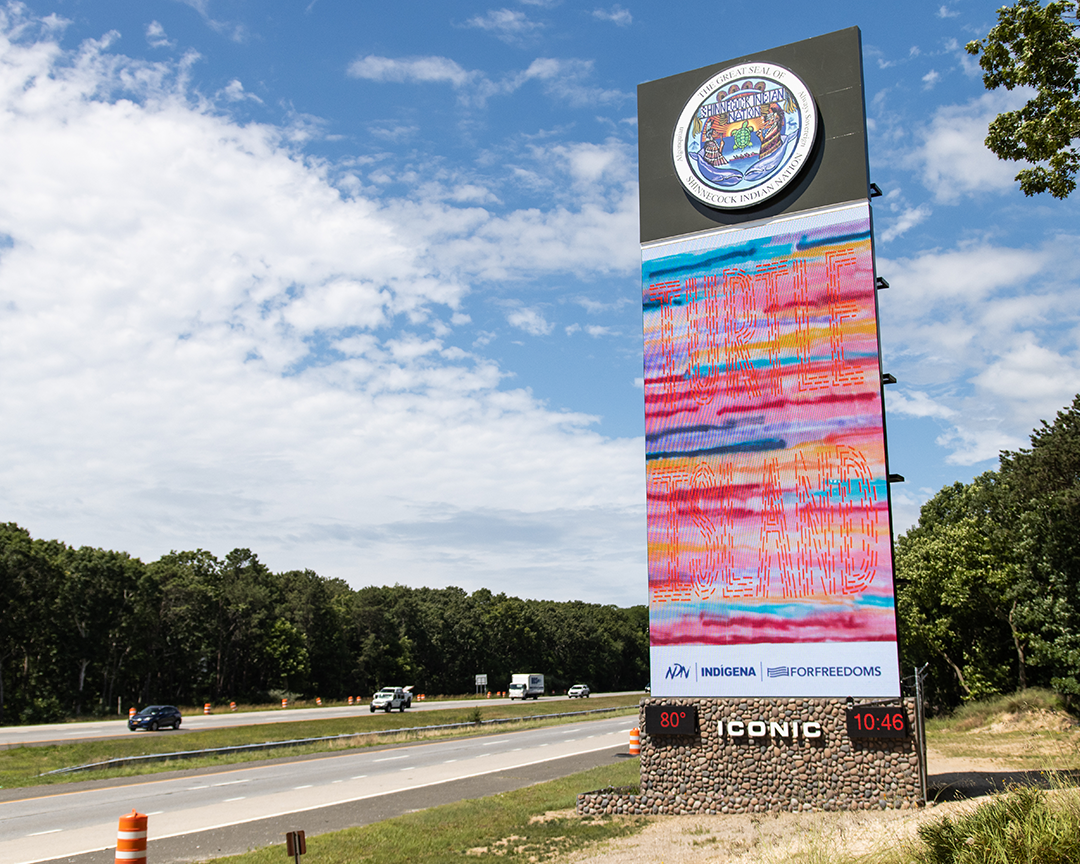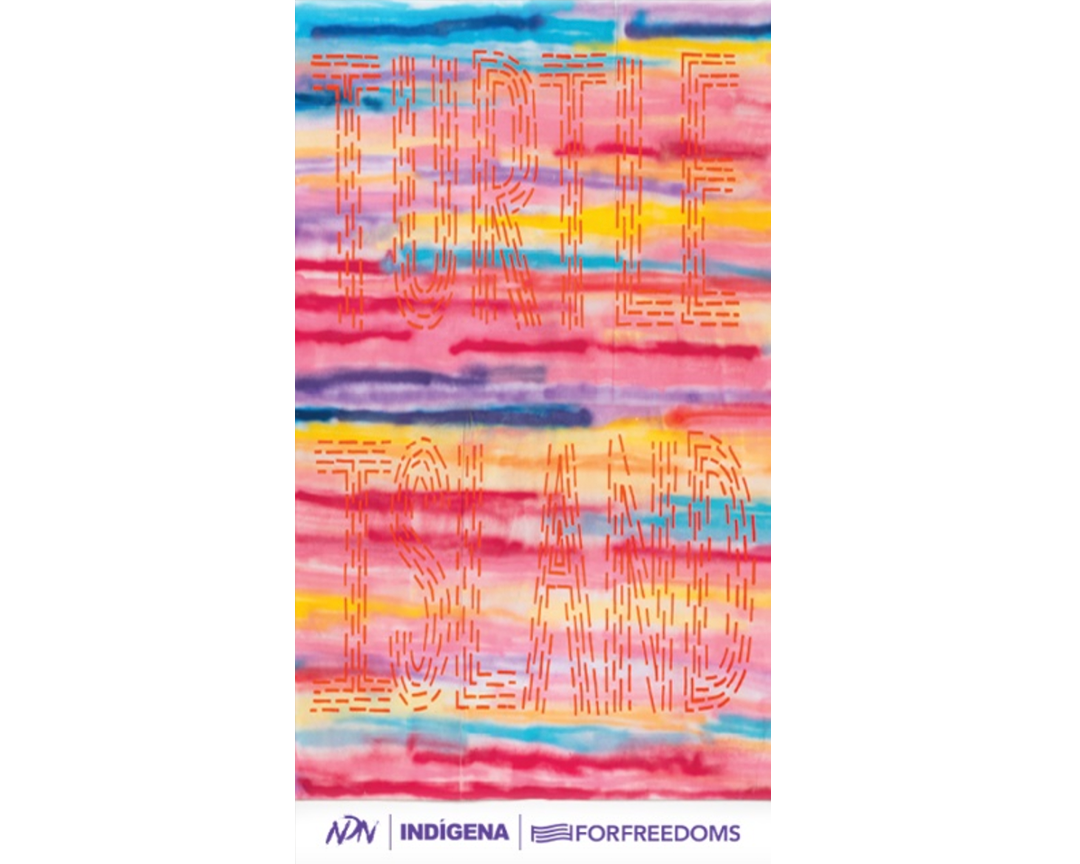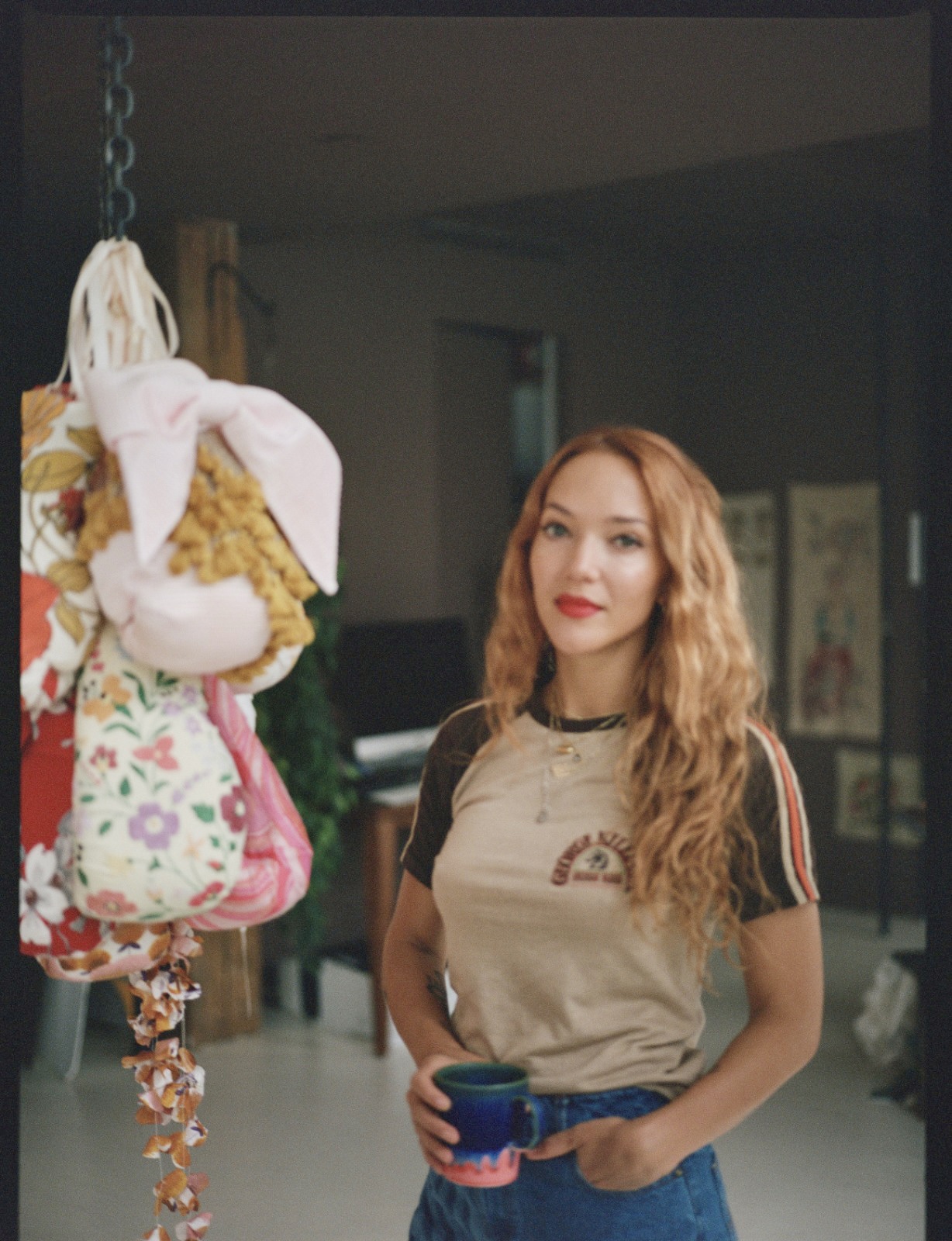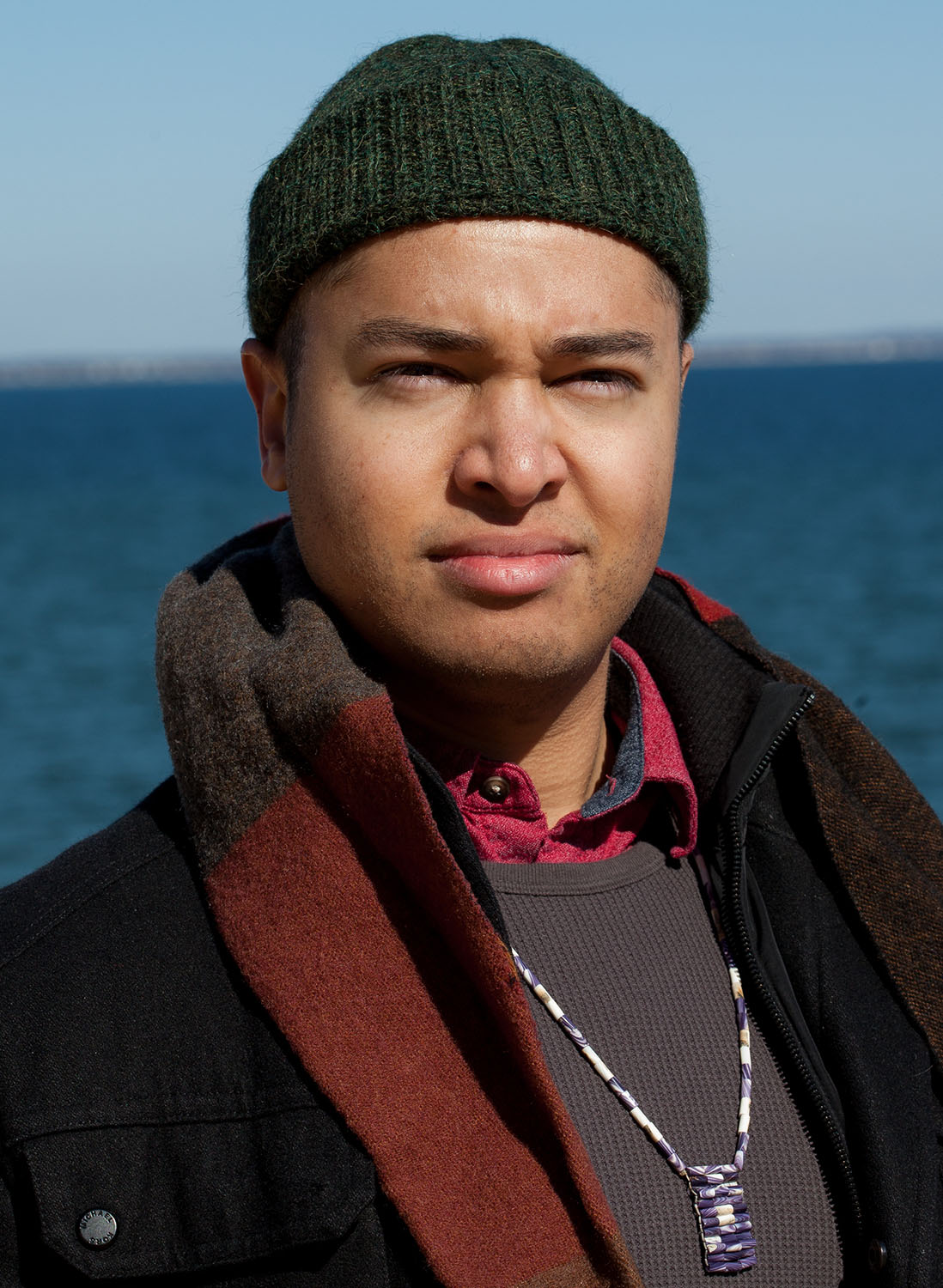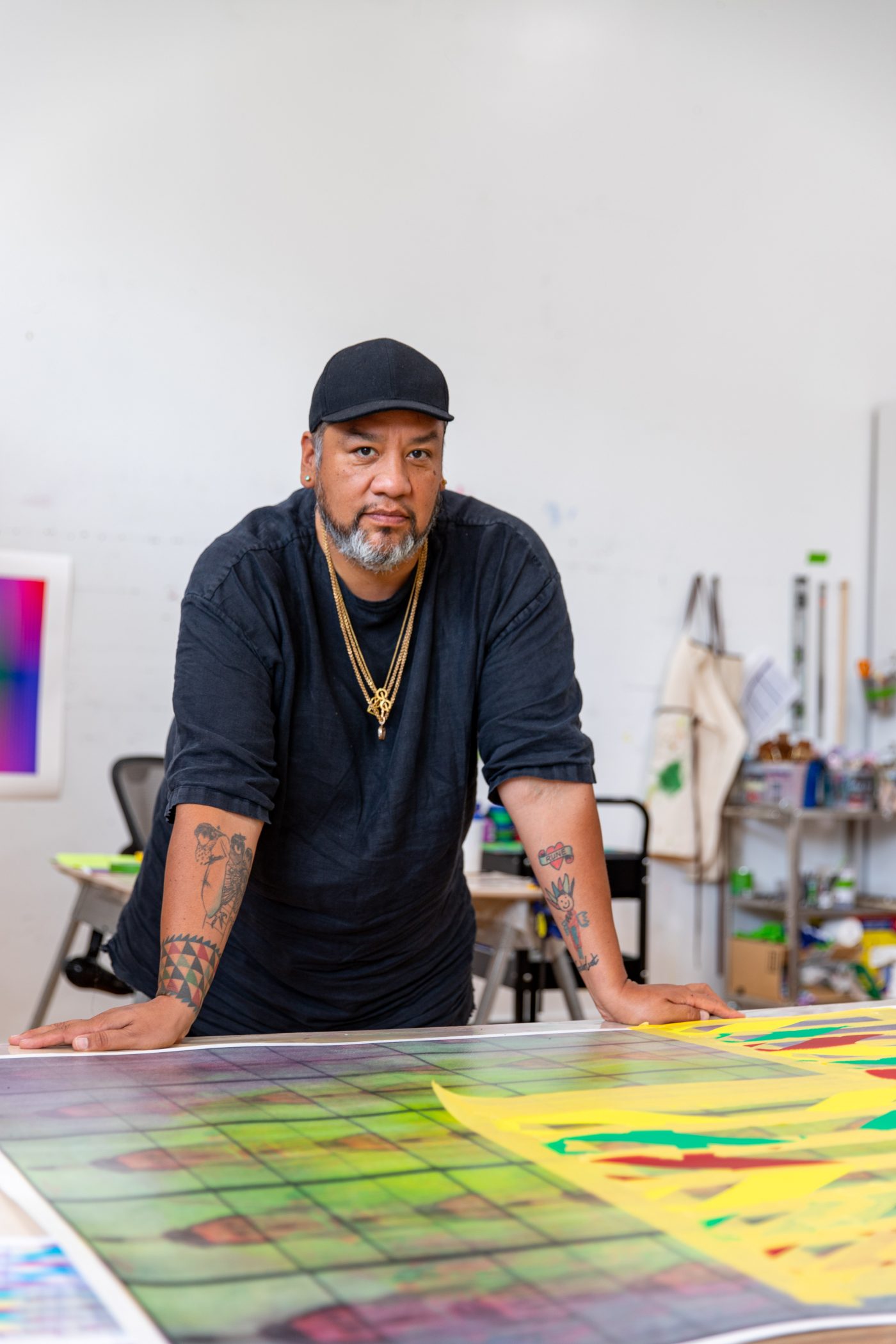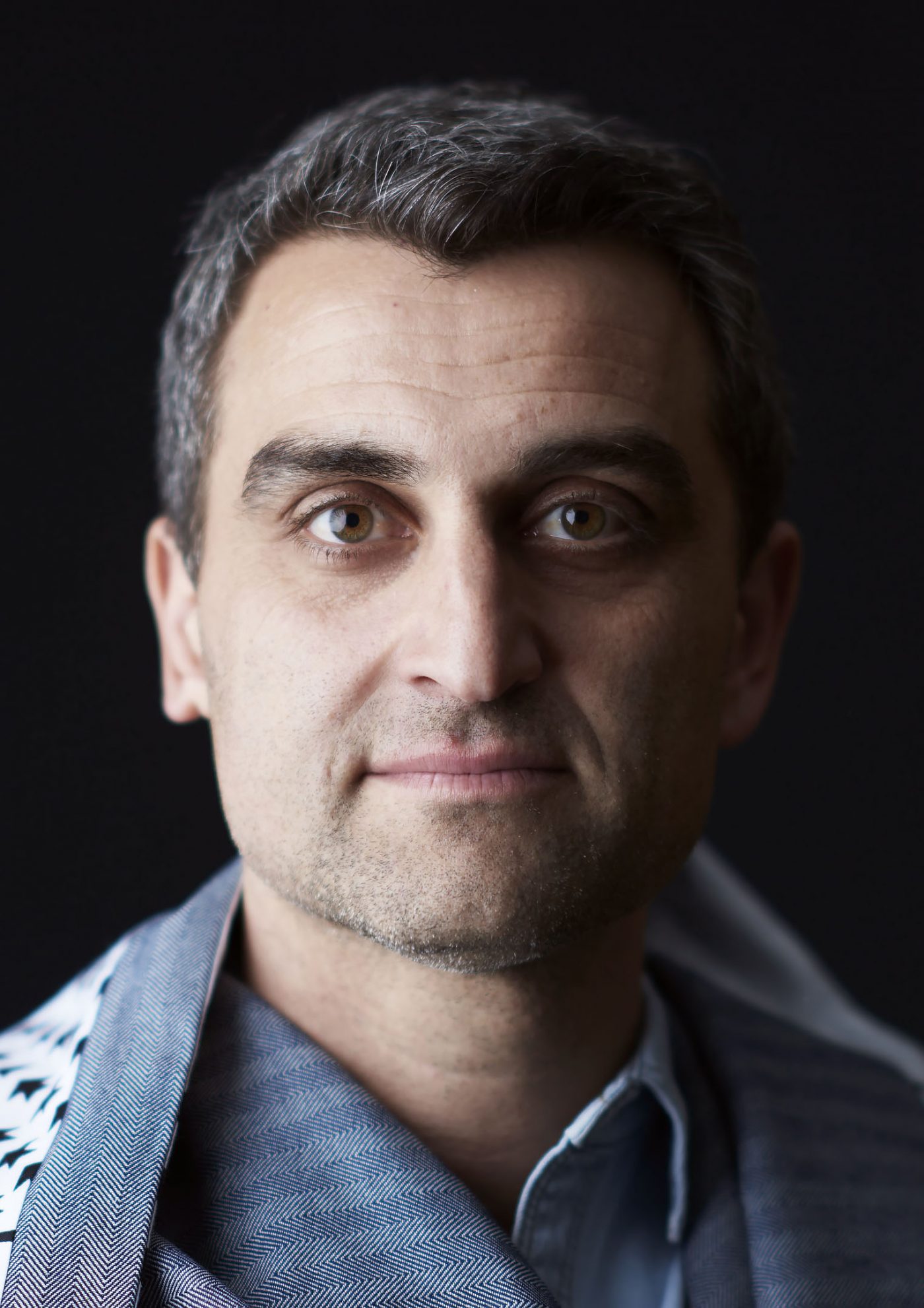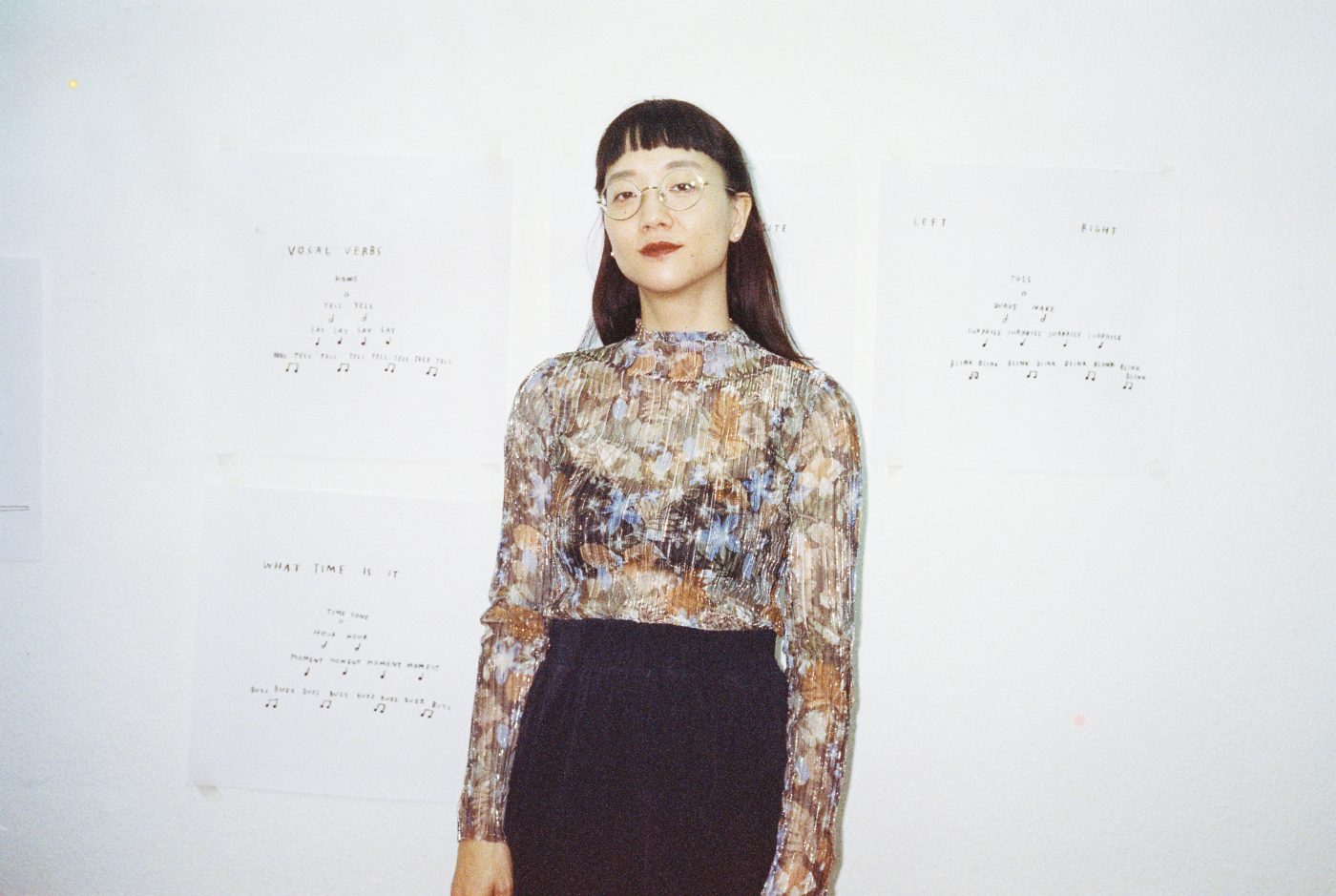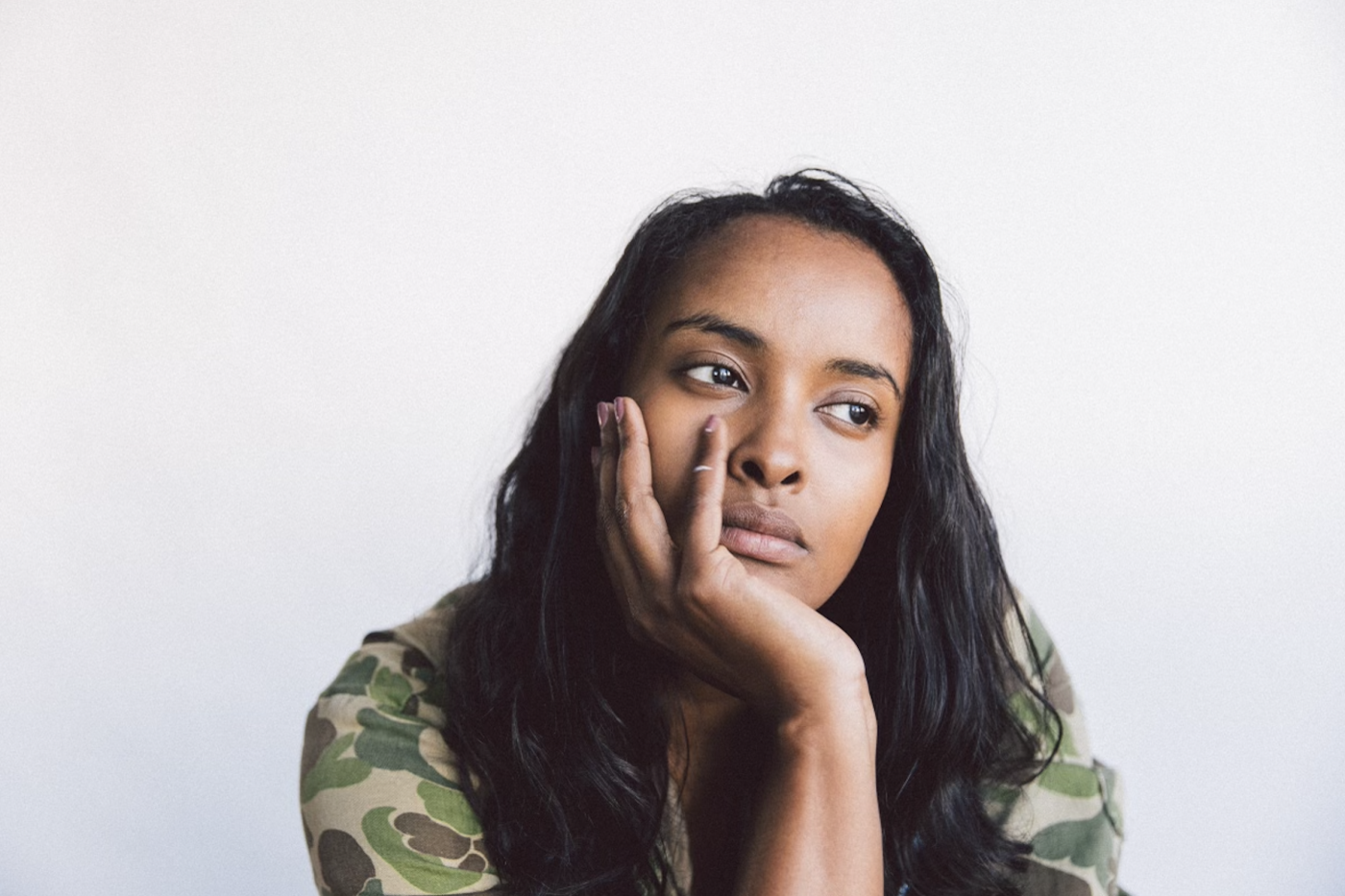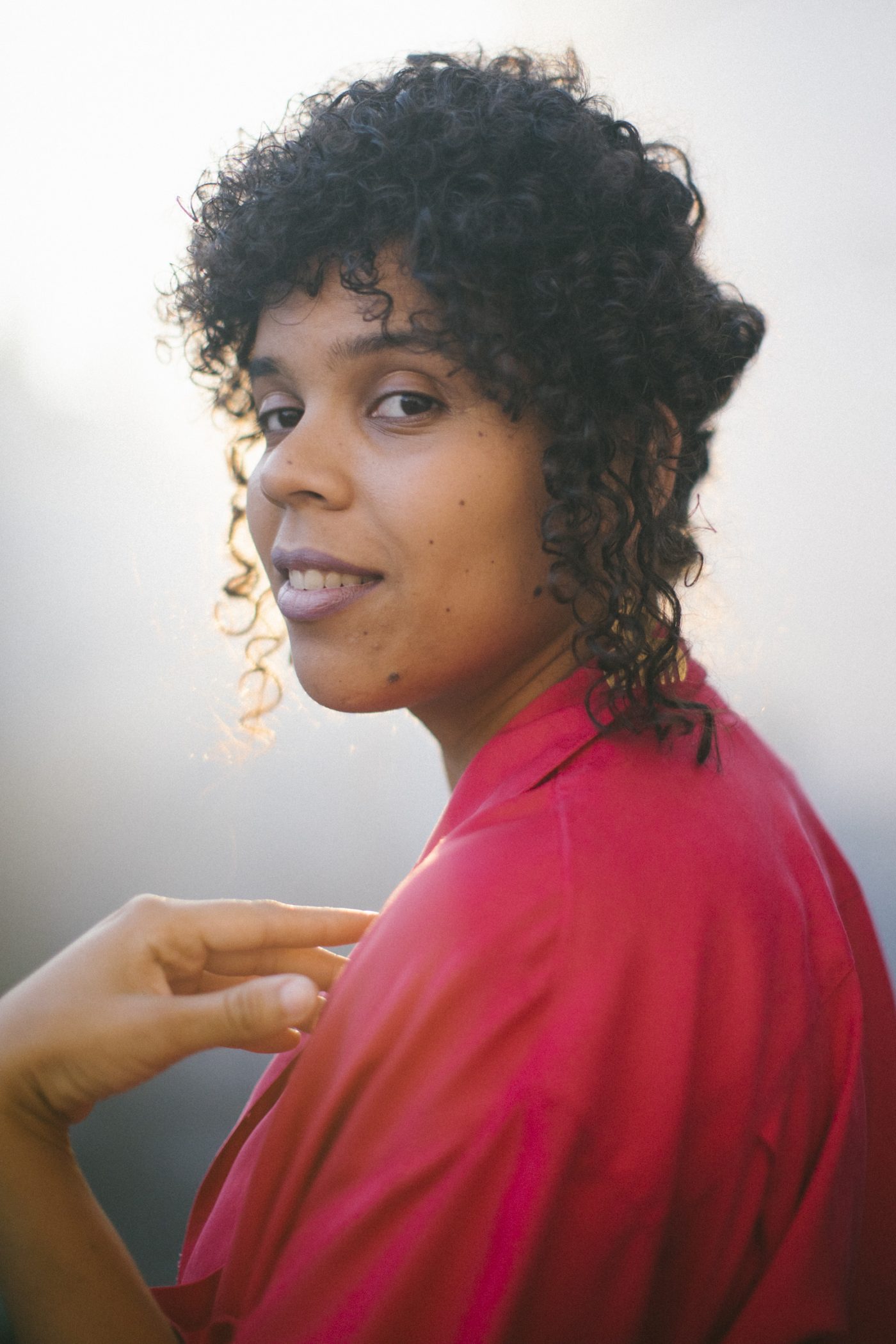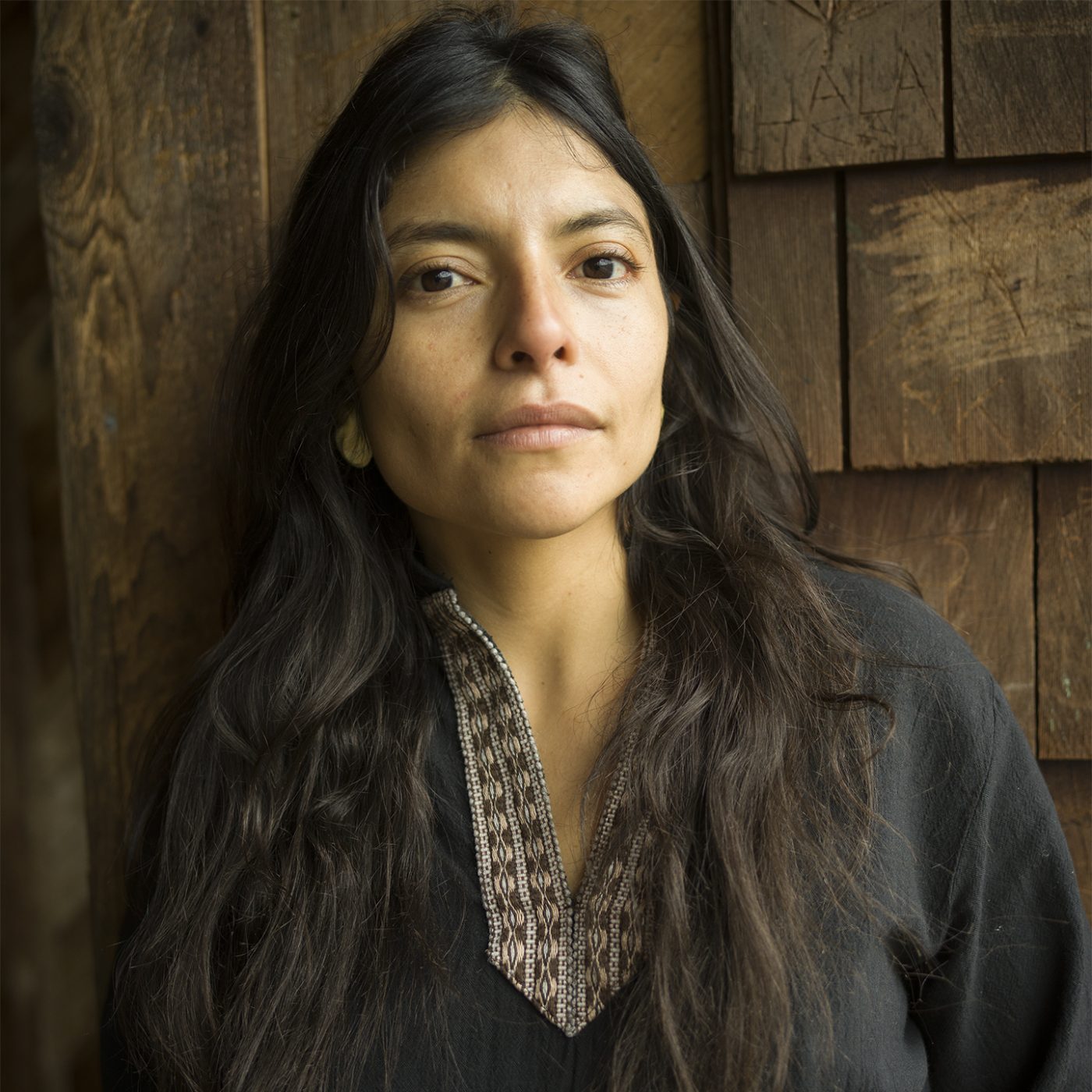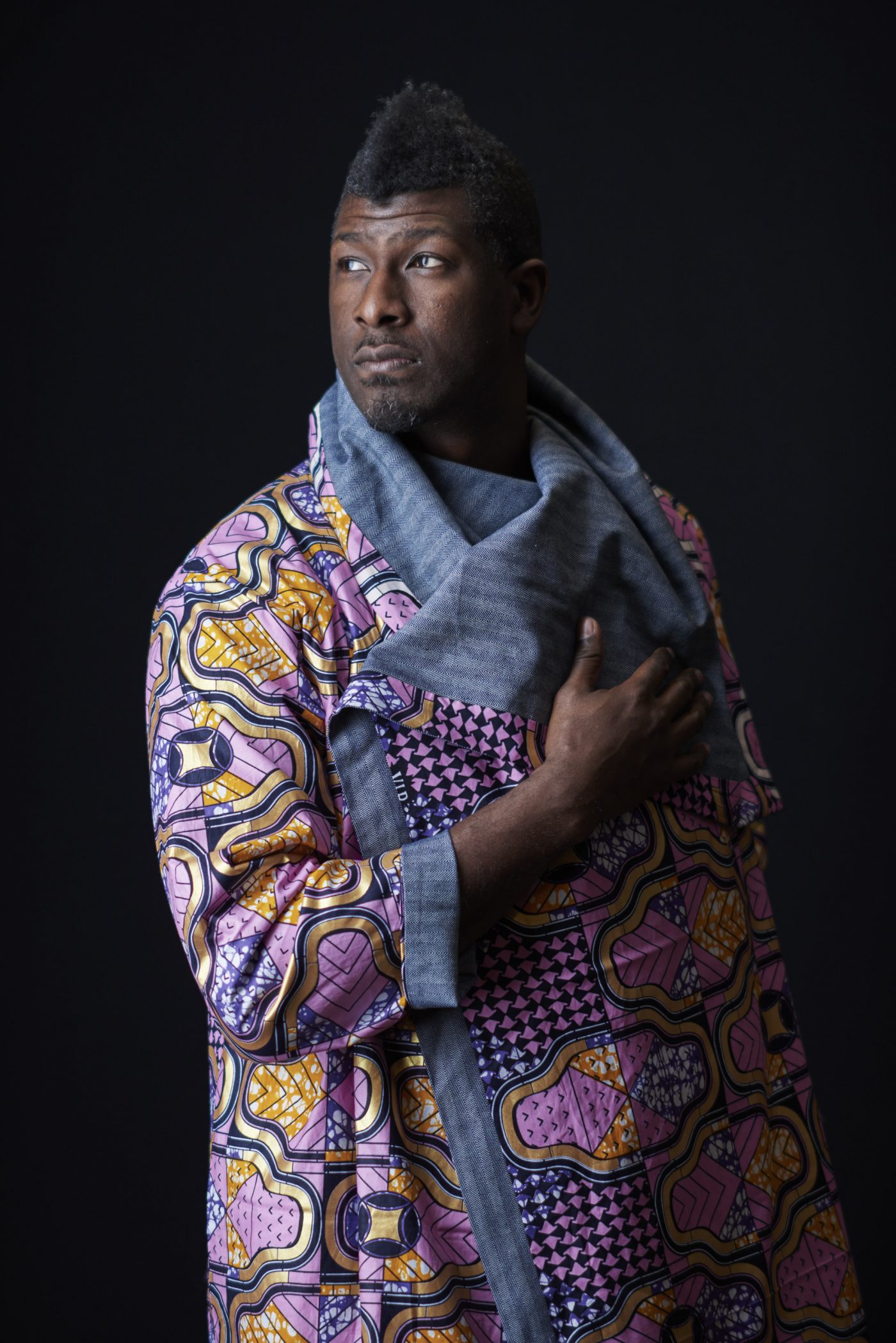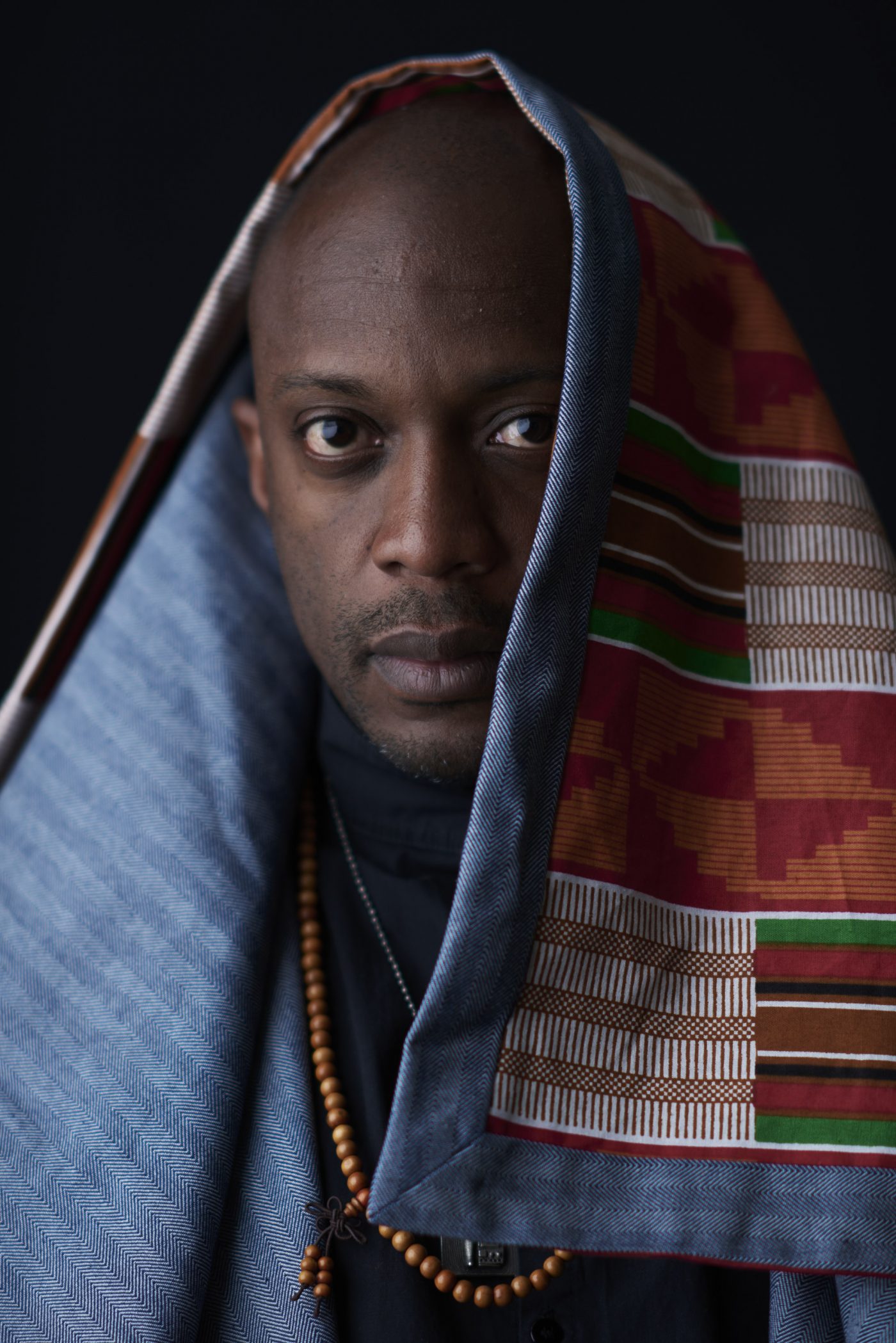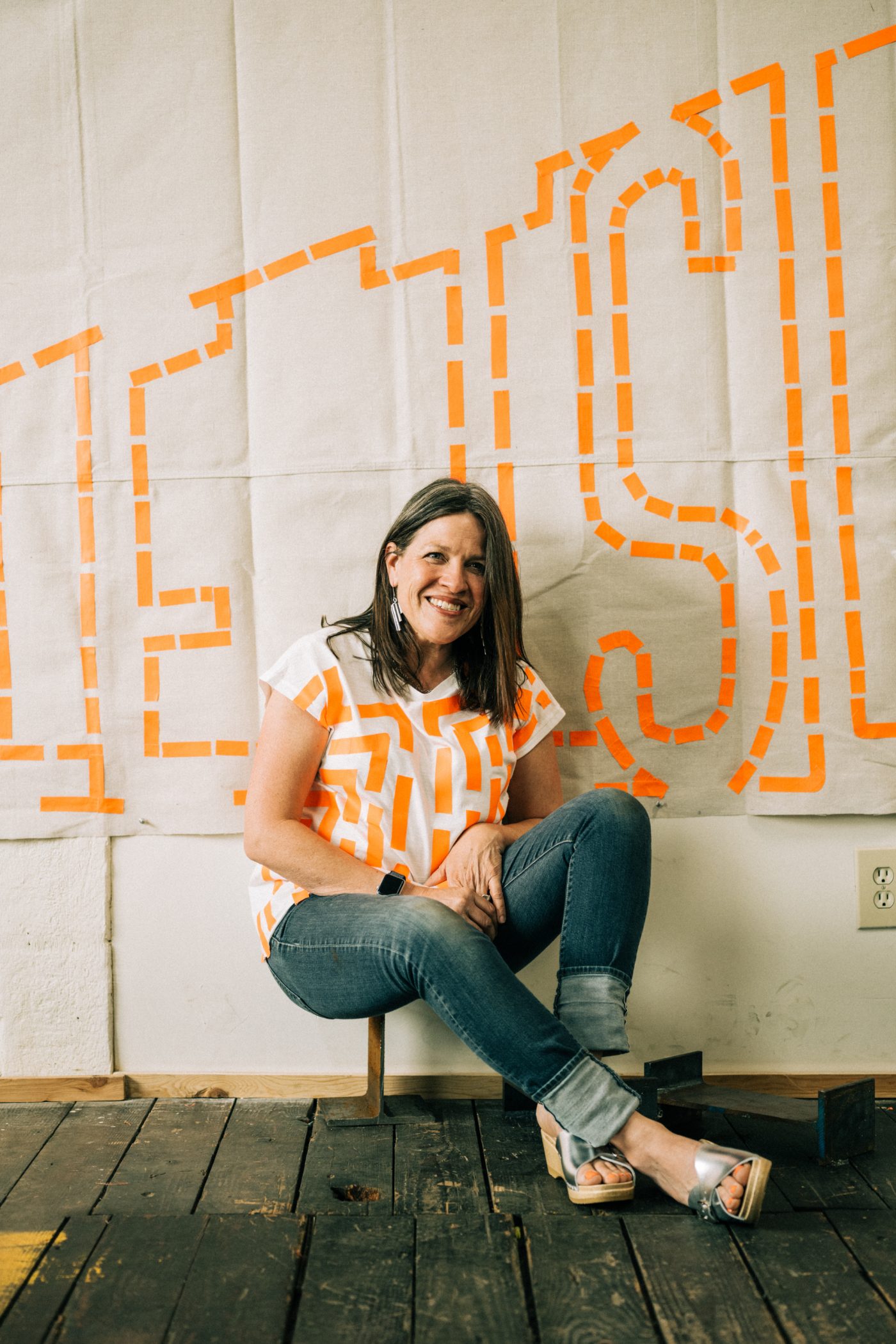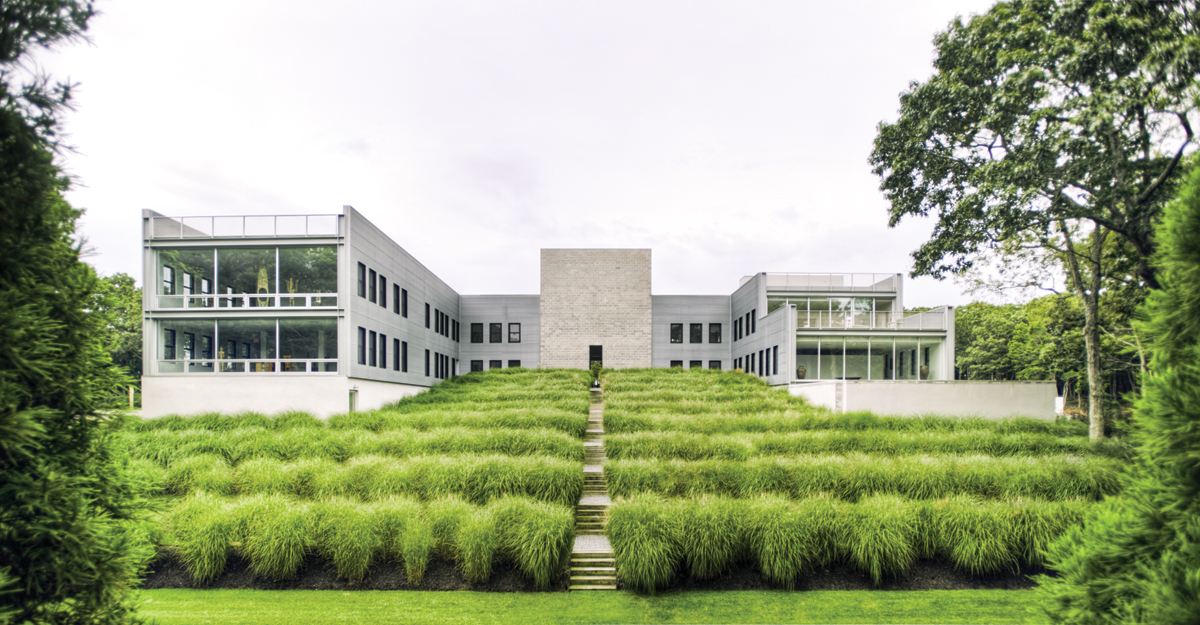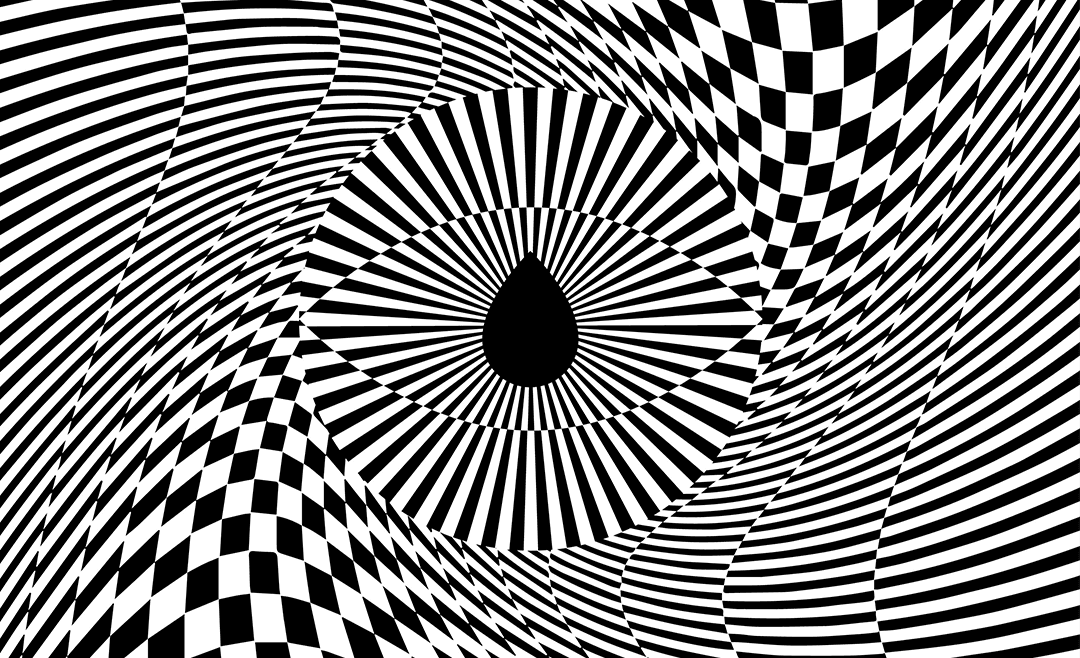Another Justice: US is Them
ARCHIVE
For the Summer of 2022, the Parrish Art Museum invited Hank Willis Thomas (b. 1976, Plainfield, NJ), a conceptual artist working with themes related to identity, commodity, media, and popular culture, and For Freedoms–the artist coalition he co-founded with Eric Gottesman, Michelle Woo, and Wyatt Gallery with the mission to model and increase creative civic engagement, discourse, and direct action—to consider the Museum as a site for works that encourage new ways to experience art, architecture, landscape, and community. On view in the Parrish galleries, outdoors on the Museum grounds, and as digital billboards on the Shinnecock Monuments on Sunrise Highway, Another Justice: US is Them included nearly 30 works by 12 contemporary artists—many created specifically for the exhibition—in mixed media, sculpture, site-specific installation, wall painting, and photography.
Exhibited Artists: Zoë Buckman, Pamela Council, Jeremy Dennis, Jeffrey Gibson, Eric Gottesman, Christine Sun Kim, Muna Malik, Joiri Minaya, Koyoltzintli Miranda-Rivadeneira, Kambui Olujimi, Hank Willis Thomas, and Marie Watt
AT THE MUSEUM
Planned in conjunction with For Freedoms’ ongoing campaign, Another Justice: By Any Medium Necessary, the works on view were a call to the community to reconvene, and reconsider what justice can be in a time of imbalance. Together, they asked the viewer to imagine a just world. How do we get there from here? What is your role? Each artwork presented an immersion into that artist’s calibration towards justice.
Thomas and Olujimi took an expansive approach to this calibration, reconstructing iconic symbols such as the U.S. flag, prison uniforms, and portraits of presidential assassins. Buckman, Council, and Minaya applied an intimate lens, contrasting personal histories of labor, gender-based violence, and exoticization with brilliant colors, vibrant textiles, and dynamic patterns. Kim added an element of movement, speaking to visitors using notations to convey the motions of American Sign Language in an immersive mural. Gottesman asked how we reconcile the impact of the past, obscuring photographs of Indigenous appropriation, while Malik continued this prompt outdoors, inviting ideas from viewers on how to collectively travel towards a more just world in a human-scale origami boat.
REMEMBER ME
Installed on the south-facing façade of the Museum is the 55-foot neon Remember Me (2022) by Hank Willis Thomas. The source material for Remember Me was a vintage postcard the artist discovered from the Amistad Center of Art and Culture at the Wadsworth Atheneum Museum of Art in Connecticut. On one side was a photo of a young Black man in a jacket and tie, holding a rifle, and wearing a hat associated with Buffalo Soldiers—the Black cavalry regiments formed by the U.S. Army in 1866. On the other side were the handwritten words, “Remember me.” The photograph references the overwhelming participation of African Americans in WWI. With this work, Hank Willis Thomas honors the many individuals who actively participate in society, but who are not often recognized or remembered.
Trained as a photographer, Hank Willis Thomas has always focused on framing and context in his work. In the galleries, he combines archival images with new or rarely used technical processes for, Remember Me (Amérique Forms in Space). Here, he uses the portrait of the Black American soldier featured on the same archival postcard from which he replicated the handwriting in the neon work Remember Me, and overlays it with a Lichtenstein-esque Pop Art U.S. flag. Viewers are prompted to shift their position or use a tool to see the work in its entirety. In both form and content, the work reveals the multiple ways to look at a given historical moment or subject. By activating this retroreflective work with a flash photograph, the viewer reveals the latent image, thereby stepping into the role of image-maker.
THE SHINNECOCK MONUMENTS
Expanding beyond the Museum walls, Indigenous artists activated the local Shinnecock Monuments throughout July, August, and September with digital billboards which engaged with the Land Back Movement and invited travelers to consider their own relationship to the land upon which we reside. Featured artists included Jeremy Dennis (Shinnecock), Jeffrey Gibson (Mississippi Choctaw-Cherokee), Koyoltzintli Miranda-Rivadeneira (Ecuadorian, Chi’xi), and Marie Watt (Seneca). Learn more about the monuments and local Land Back activism through the articles below.
The 62-foot-tall electronic billboards were erected by the Shinnecock along Sunrise Highway in 2019 to generate revenue for the Nation. Presenting the work of these artists on them is an effort to uplift Native voices and to model, on a small scale, the possibility for economic justice through creative investment. The four works on view invite the viewer to consider their own relationship to the land. In general, monuments serve as an extension of public civic spaces, signaling who we celebrate and which histories we collectively value. The activation of the Shinnecock Monuments in the context of this exhibition is an affirmation of these Indigenous voices through artist expression and civic discourse.
Works on the Shinnecock Monuments by Gibson, Miranda-Rivadeneira, and Watt are part of the recent Landback Public Art Initiative by For Freedoms, who asked over 20 Indigenous artists and allies the question “What does LANDBACK mean to you?”—inspiring reflections on the past and visions for the future. Artist responses, ranging from the literal to the imaginative, imposed this issue of Indigenous stewardship on the very land it addresses. Installed to coincide with Native American Heritage Month, the Landback initiative signified a convergence of Indigenous artists across tribal communities.
A Step Towards Equity
August 20, 2021 | Peconic Land Trust | PDF
A Burial Site is Returned
August 5, 2021 | Jon Kuperschmid, The East Hampton Star | PDF
Shinnecock Burial Grounds Preserved at Sugar Loaf Hill
July 23, 2021 | Beth Young, East End Beacon | PDF
Why a Hamptons Highway Is a Battleground Over Native American Rights
May 27, 2019 | Corey Kilgannon, New York Times | PDF
A Long Island Mansion Built on 10,000 Corpses
May 3, 2022 | Natalie Discenza, WSHU | PDF
Native Americans Have Been Taking on Billionaires in the Hamptons
November 26, 2020 | Walker Bragman & Mark Colangelo, Jacobin Magazine | PDF
Shinnecock Protest Building On Ancient Burial Grounds
January 14, 2020 | Dan’s Papers | PDF
Shinnecocks’ Rallying Cry: ‘Not One More Acre’
January 16, 2020 | The East Hampton Star | PDF
THE ARTISTS
PROGRAMS & RESOURCES
Another Justice: US is Them Opening Reception Panel
The Infinite Atlas | Another Justice: By Any Medium Necessary
Land Back Roundtable–Jeremy Dennis & Koyoltzintli Miranda-Rivadeneira
Hank Willis Thomas & Herzog & de Meuron Architects Panel
The Watermill Center
In an ongoing partnership with the Museum, The Watermill Center invited Thomas and For Freedoms for a residency from September 14 to October 7, 2022, as part of their Inga Maren Otto Fellowship for visual artists. During the residency and in collaboration with The Watermill Center and the Parrish, For Freedoms organized a series of public programs and Town Halls with members of the East End community.
About The Watermill Center
Founded in 1992 by avant-garde visionary Robert Wilson, The Watermill Center is an interdisciplinary laboratory for the arts and humanities, supporting young and emerging artists through its year-round Artist Residency Program and International Summer Program, as well as Education Programs, exhibitions and events open to the public. The Center’s facilities enable Artists-in-Residence to integrate resources from the humanities and research from the sciences into contemporary artistic practice. The Watermill Center offers tours throughout the year of its 20,000+ square-foot building, which houses a library and a significant collection.
ABOUT FOR FREEDOMS
FOR FREEDOMS is an artist collective that centers on art and creativity as a catalyst for transformative connection and collective liberation. By wielding the power of art, the group aims to deepen and expand its capacity to interrogate what is and imagine what could be. An art collective founded in 2016 by a coalition of artists, academics, and organizers—including Hank Willis Thomas, Eric Gottesman, Michelle Woo, and Wyatt Gallery—For Freedoms promotes infinite expansion through art, and is dedicated to awakening a culture of listening, healing, and justice. Visit forfreedoms.org to learn more.
Another Justice: US is Them was organized by Corinne Erni, Senior Curator of ArtsReach and Special Projects, with support from Brianna Hernández, Curatorial Fellow, and was co-curated by Hank Willis Thomas and Carly Fischer.
The exhibition was made possible, in part, thanks to the generous support of Katherine Farley and Jerry Speyer; Alexandra Stanton and Sam Natapoff; Miyoung Lee and Neil Simpkins; Sandy and Stephen Perlbinder; George Wells; Scott and Margot Ziegler; Nina Yankowitz; Caroline Hoffman; The Lumpkin-Boccuzzi Family; and Storm Ascher, Superposition Gallery.
We are also grateful to Ben Brown Fine Arts, London, Hong Kong, Palm Beach; Jack Shainman Gallery, New York; Pace LA; and Pippy Houldsworth Gallery, London for their in-kind support.
The Parrish Art Museum’s programs are made possible, in part, by the New York State Council on the Arts with the support of Governor Kathy Hochul and the New York State Legislature, and by the property taxpayers from the Southampton School District and the Tuckahoe Common School District.


